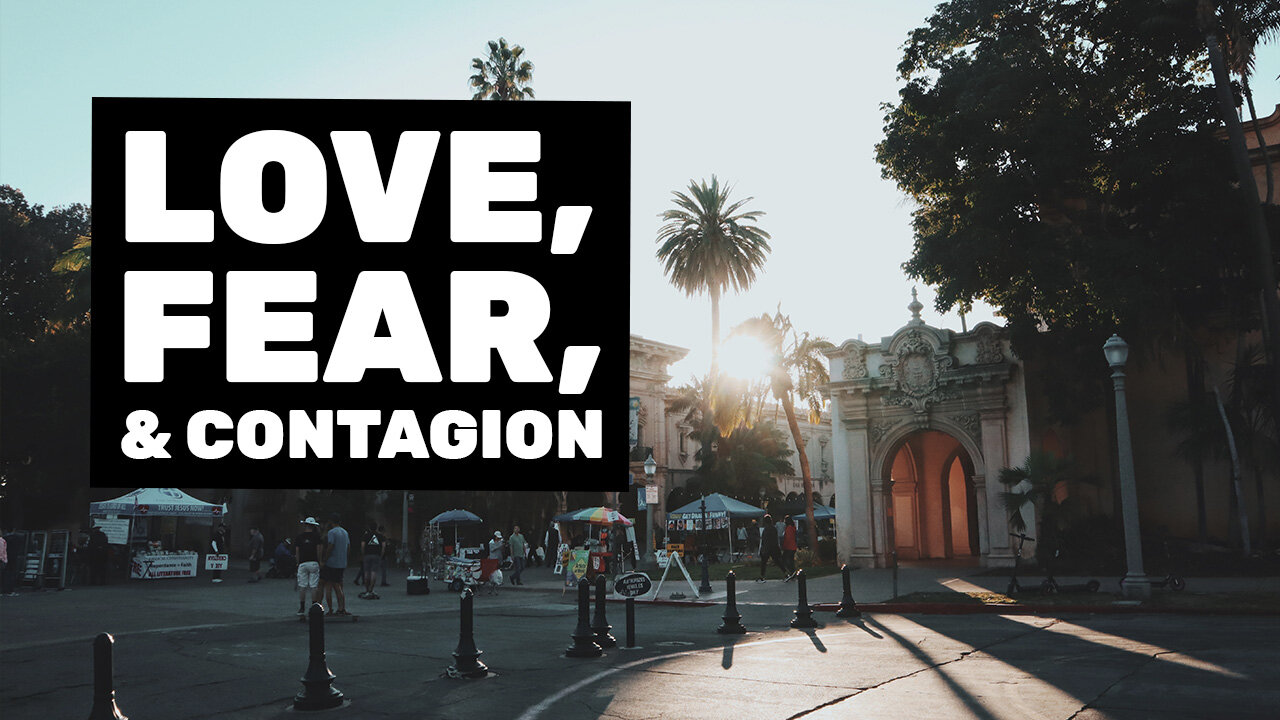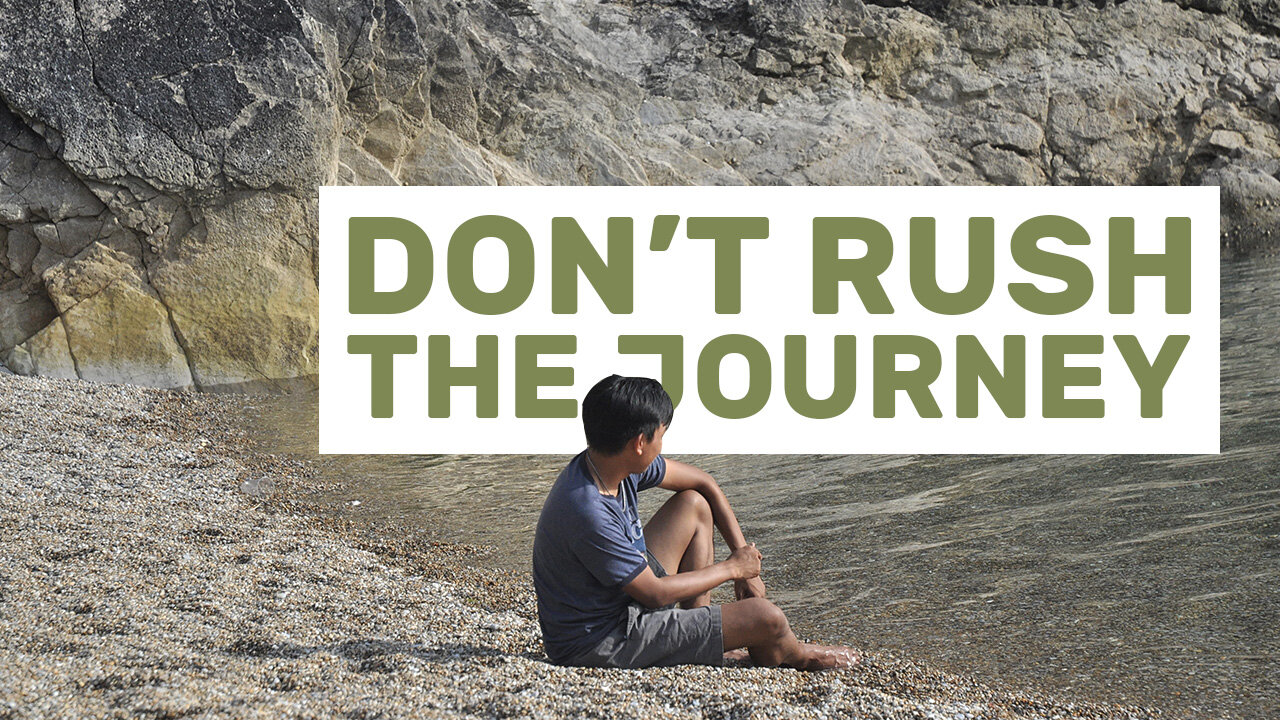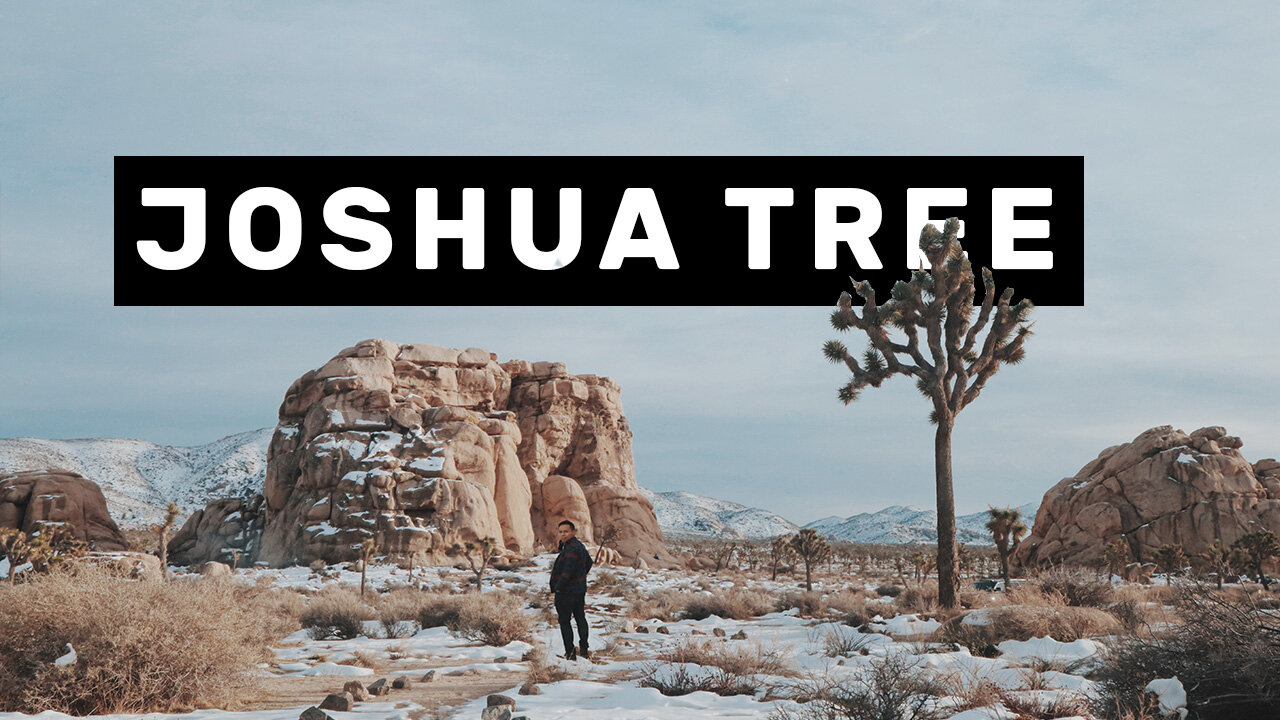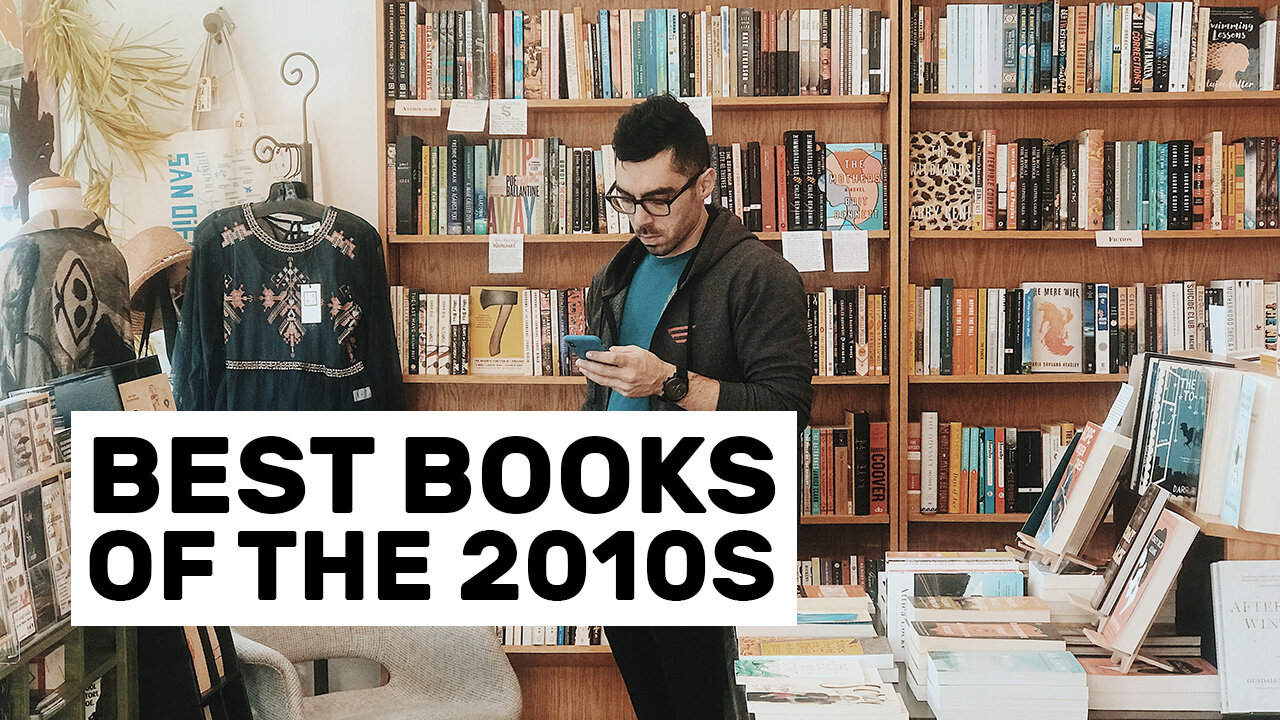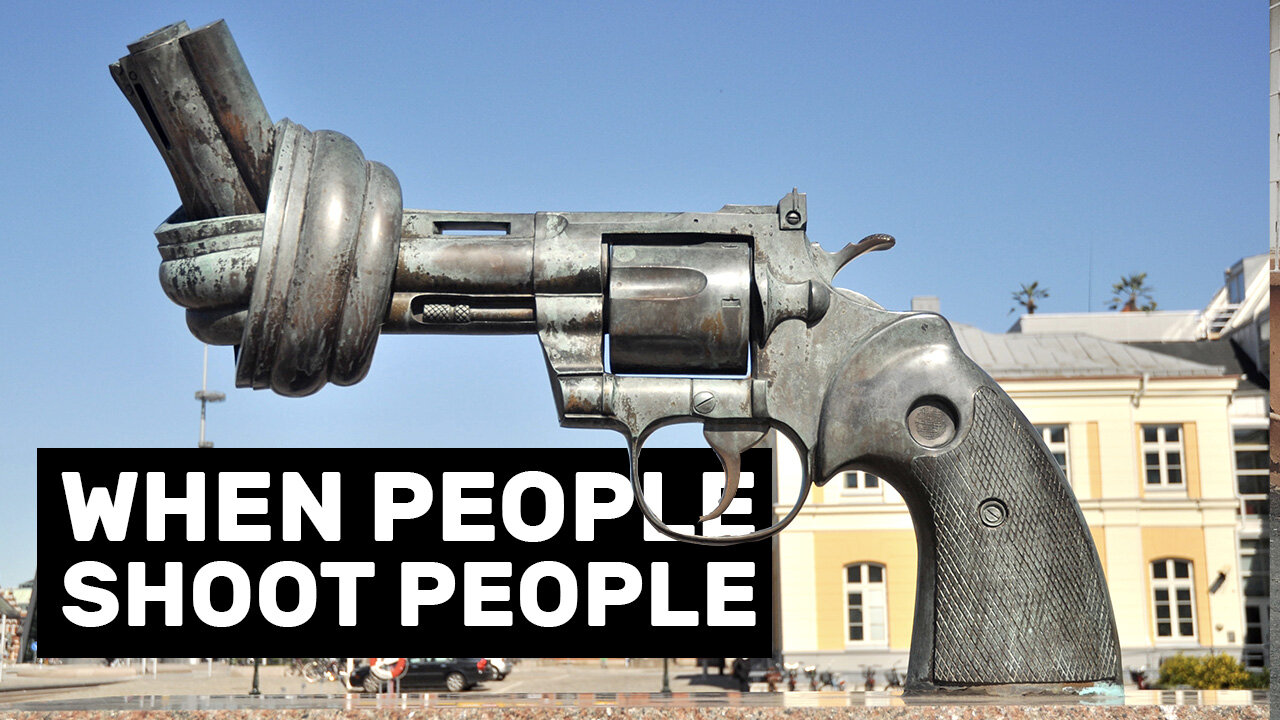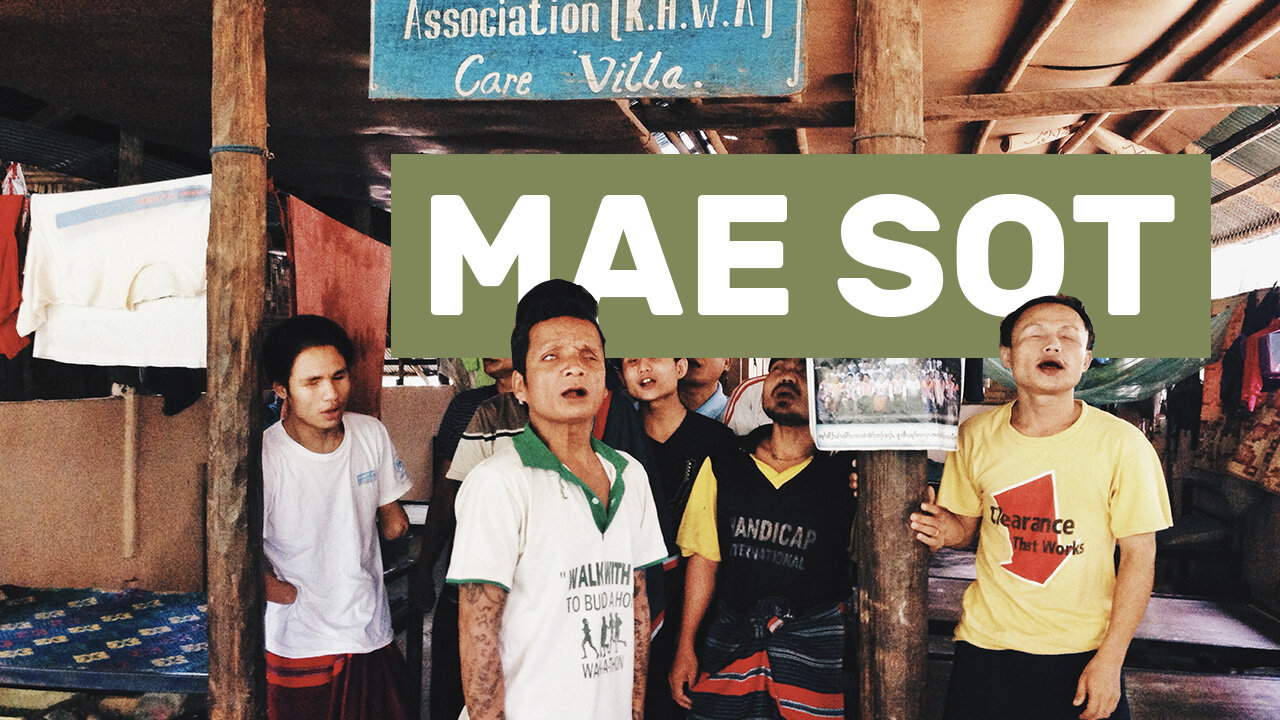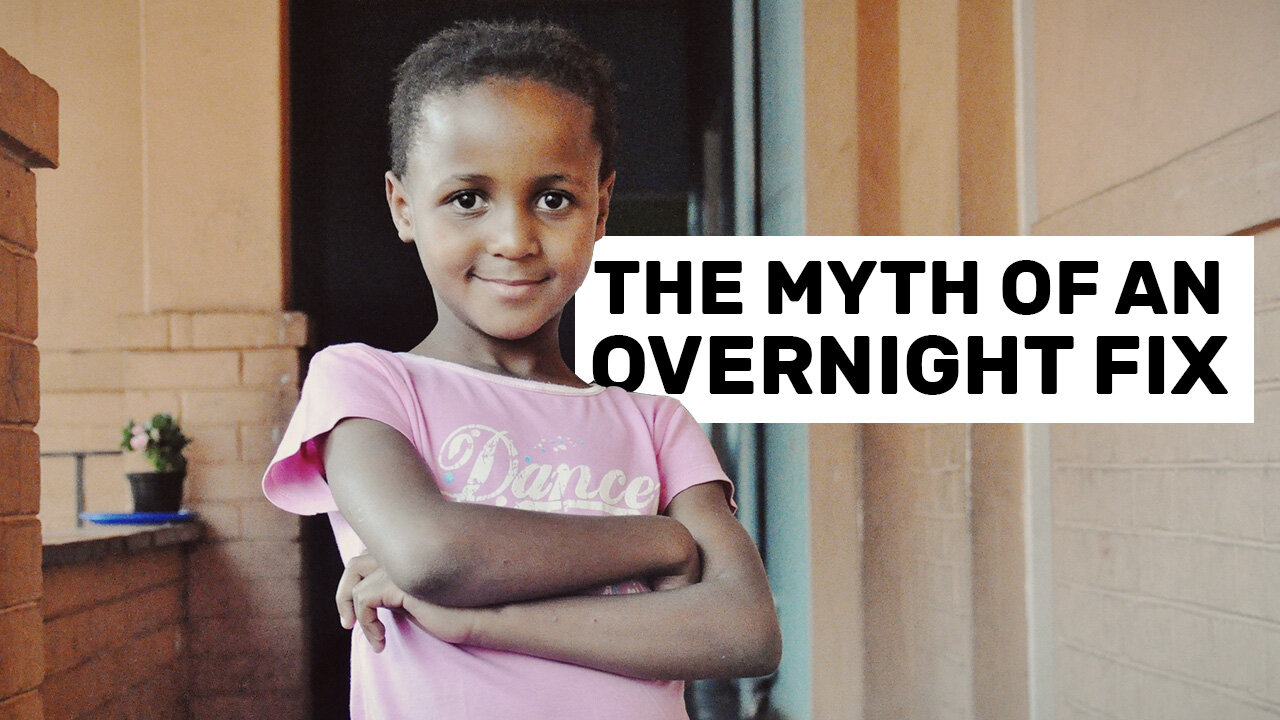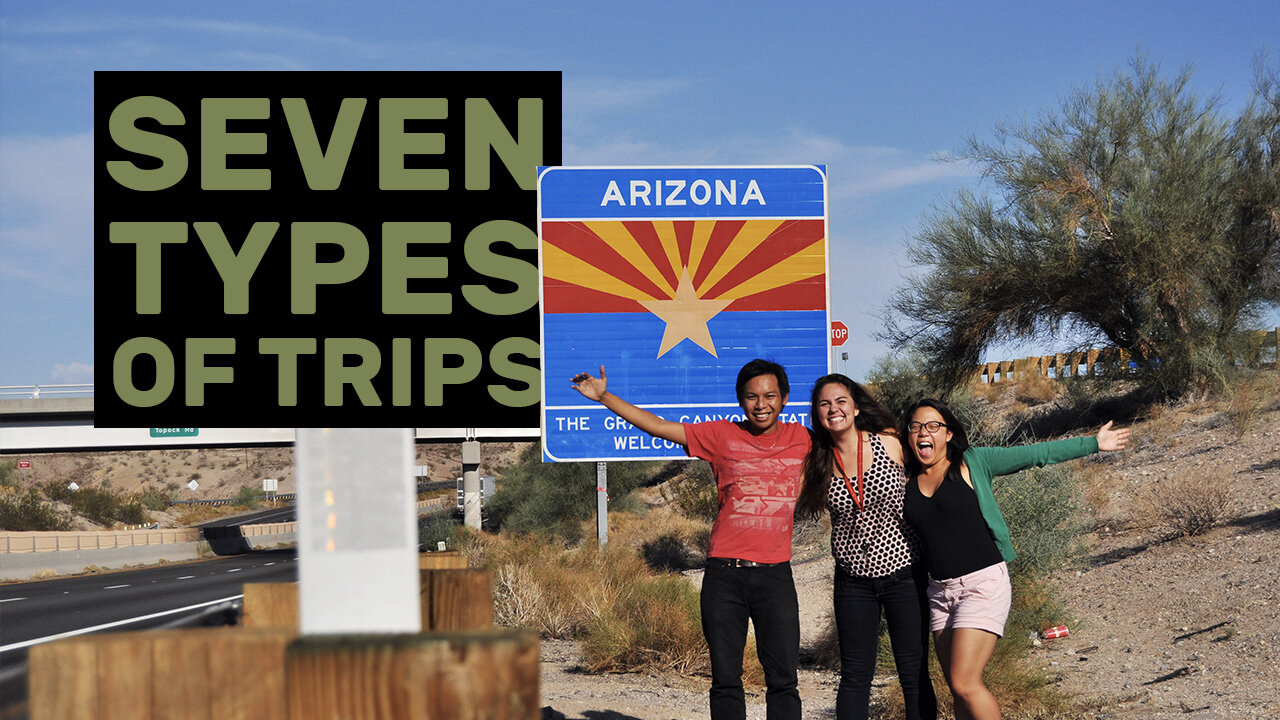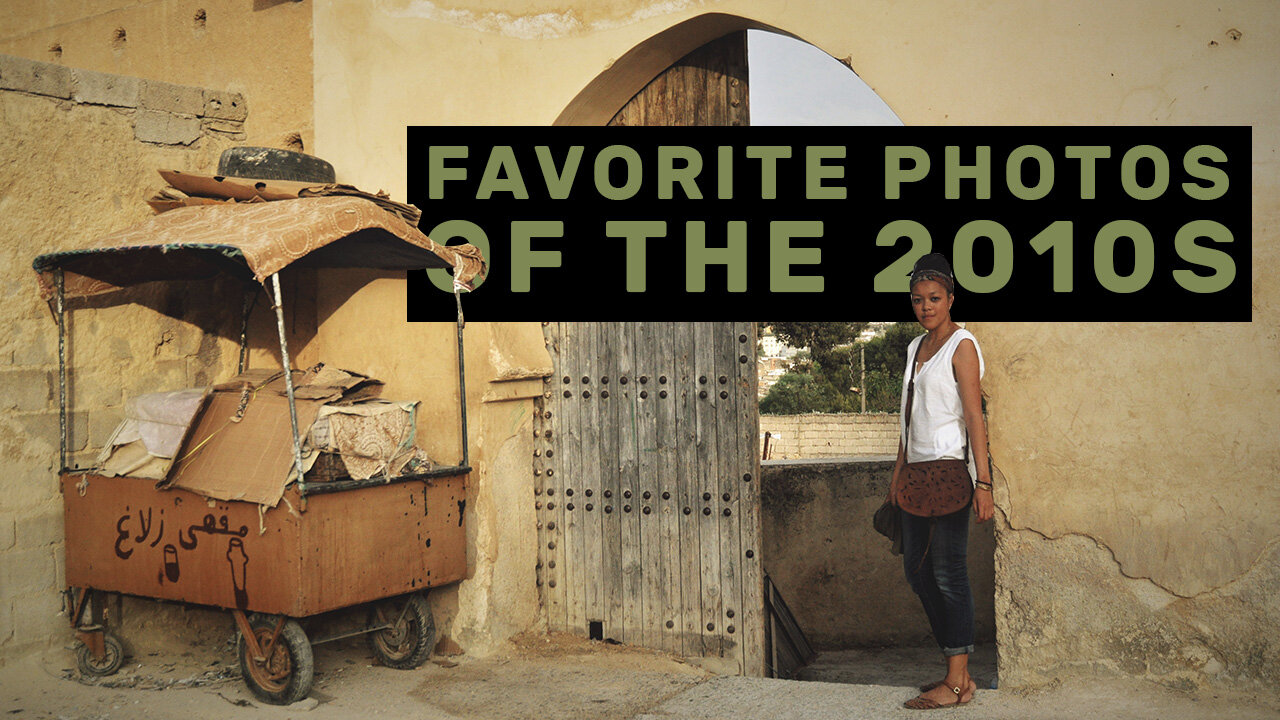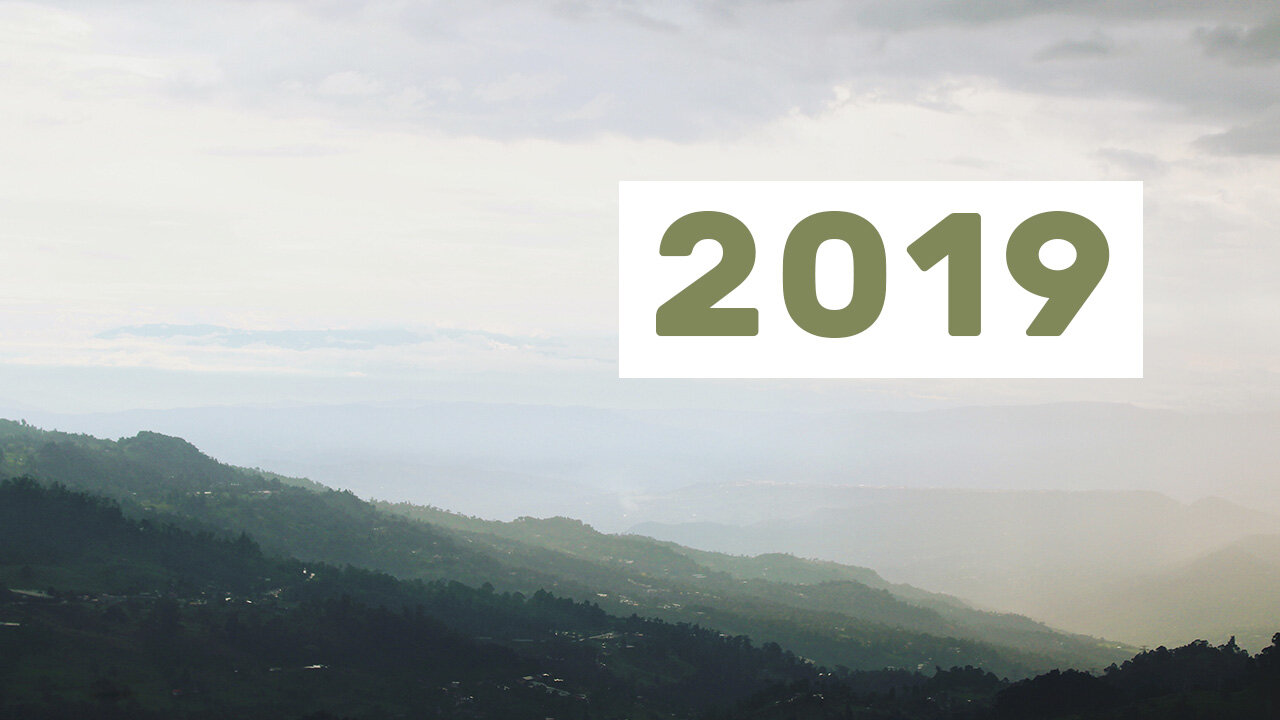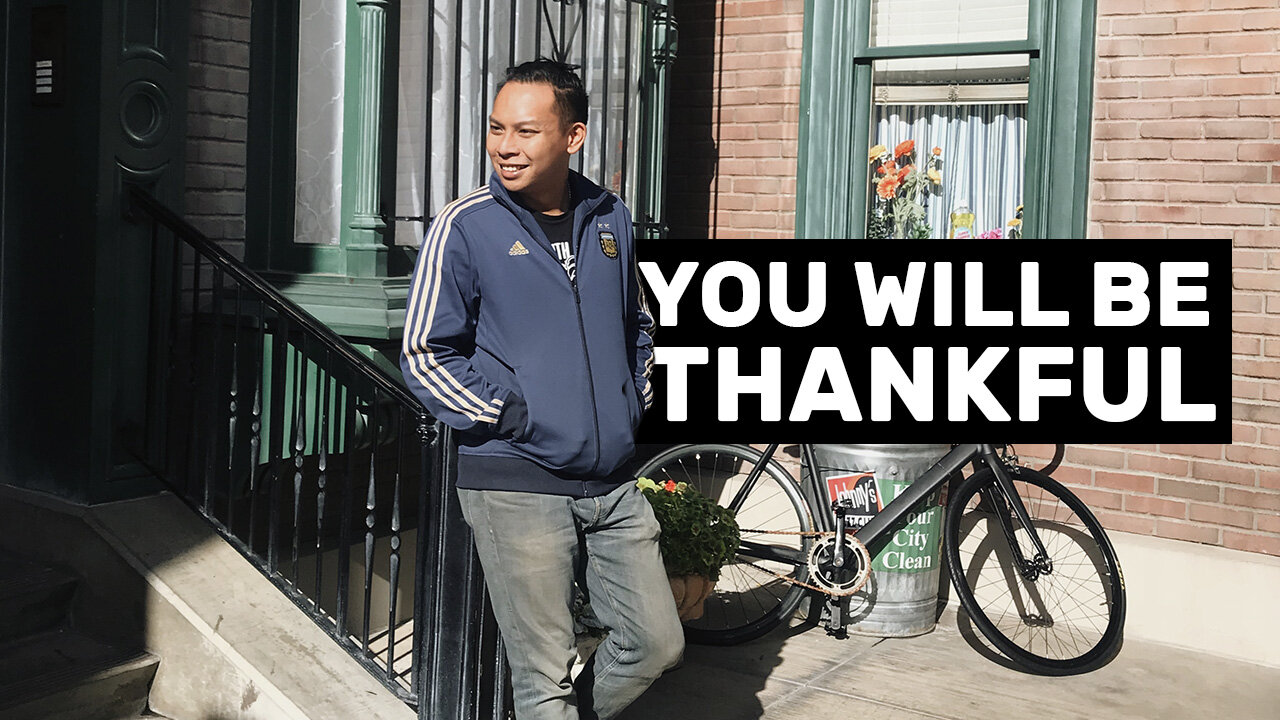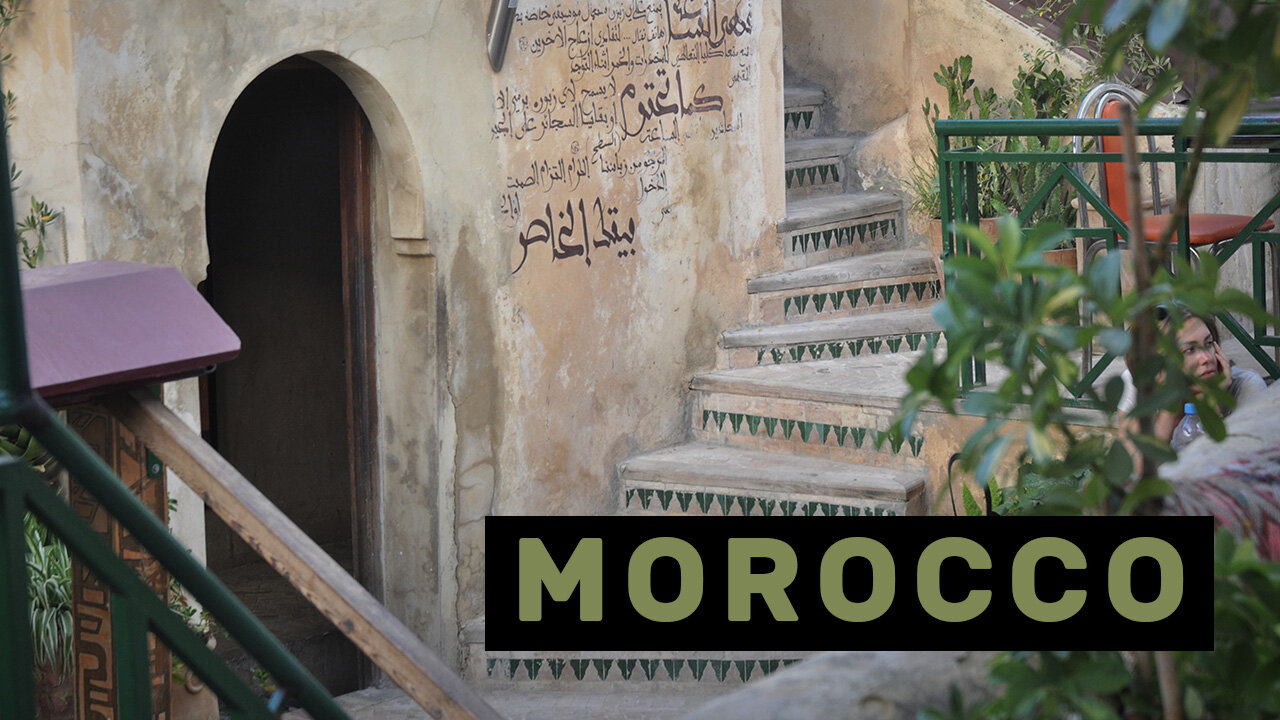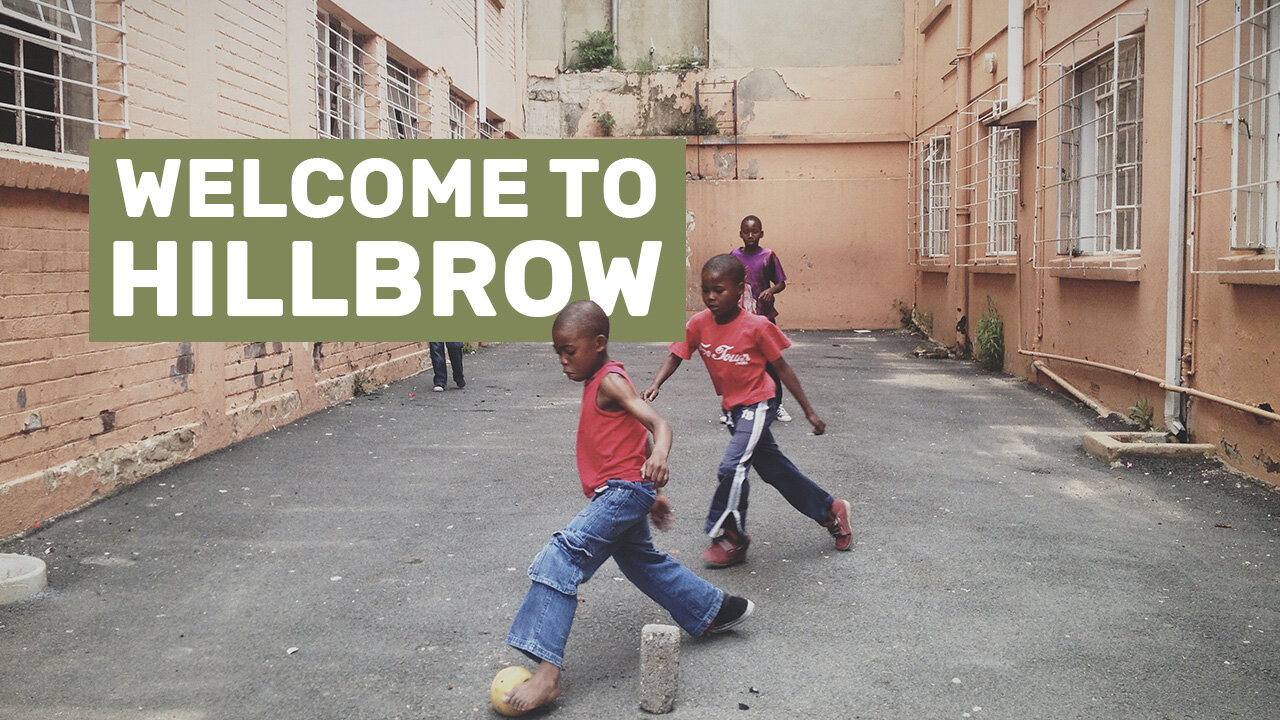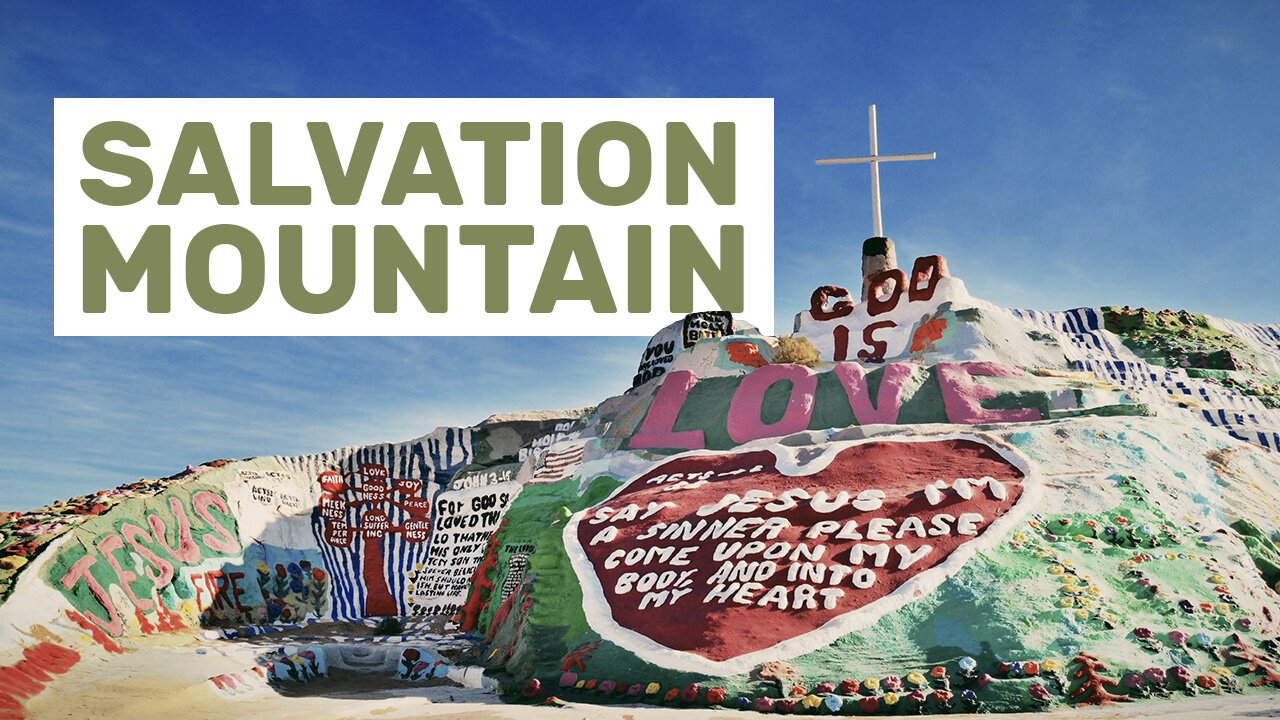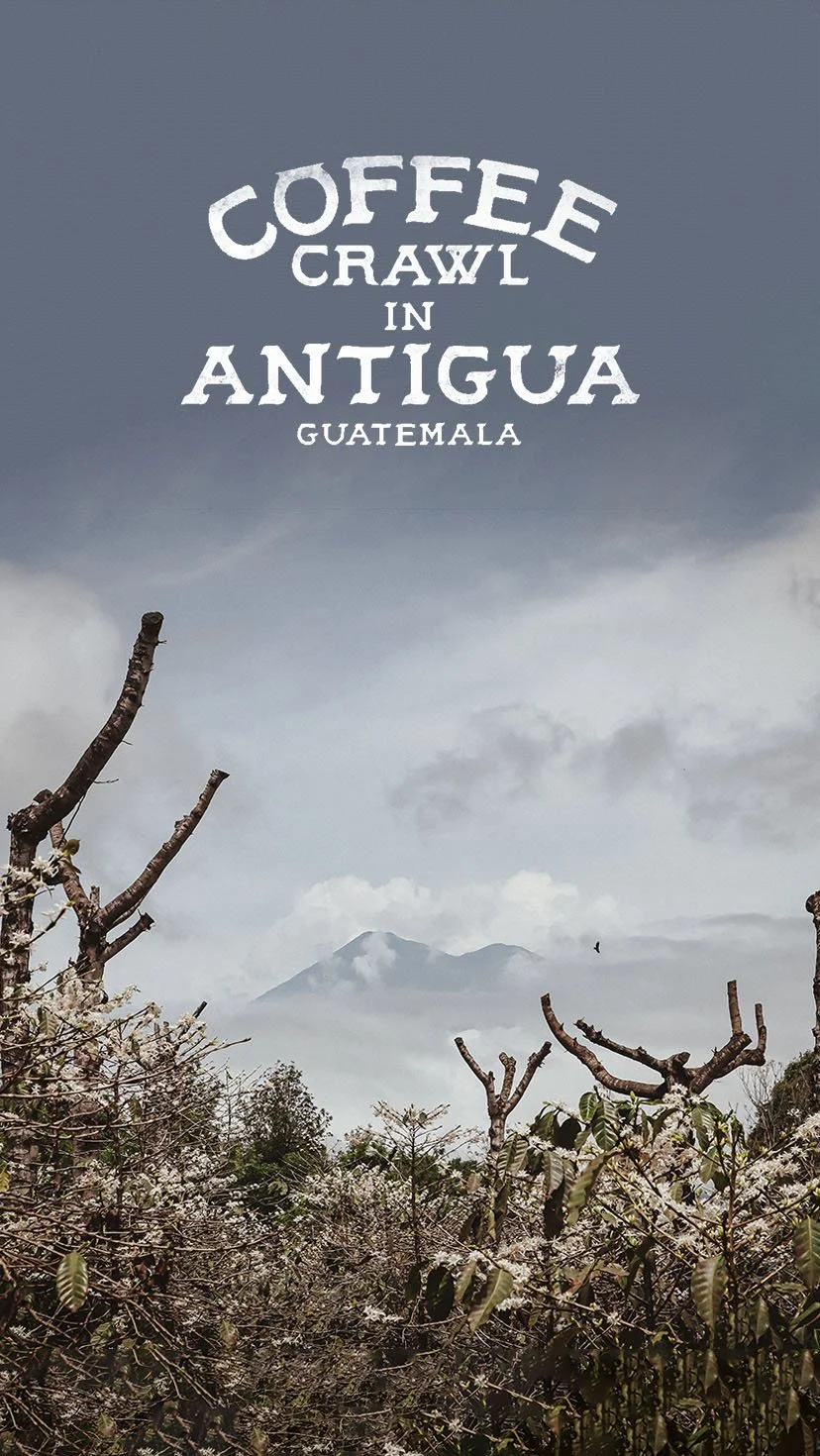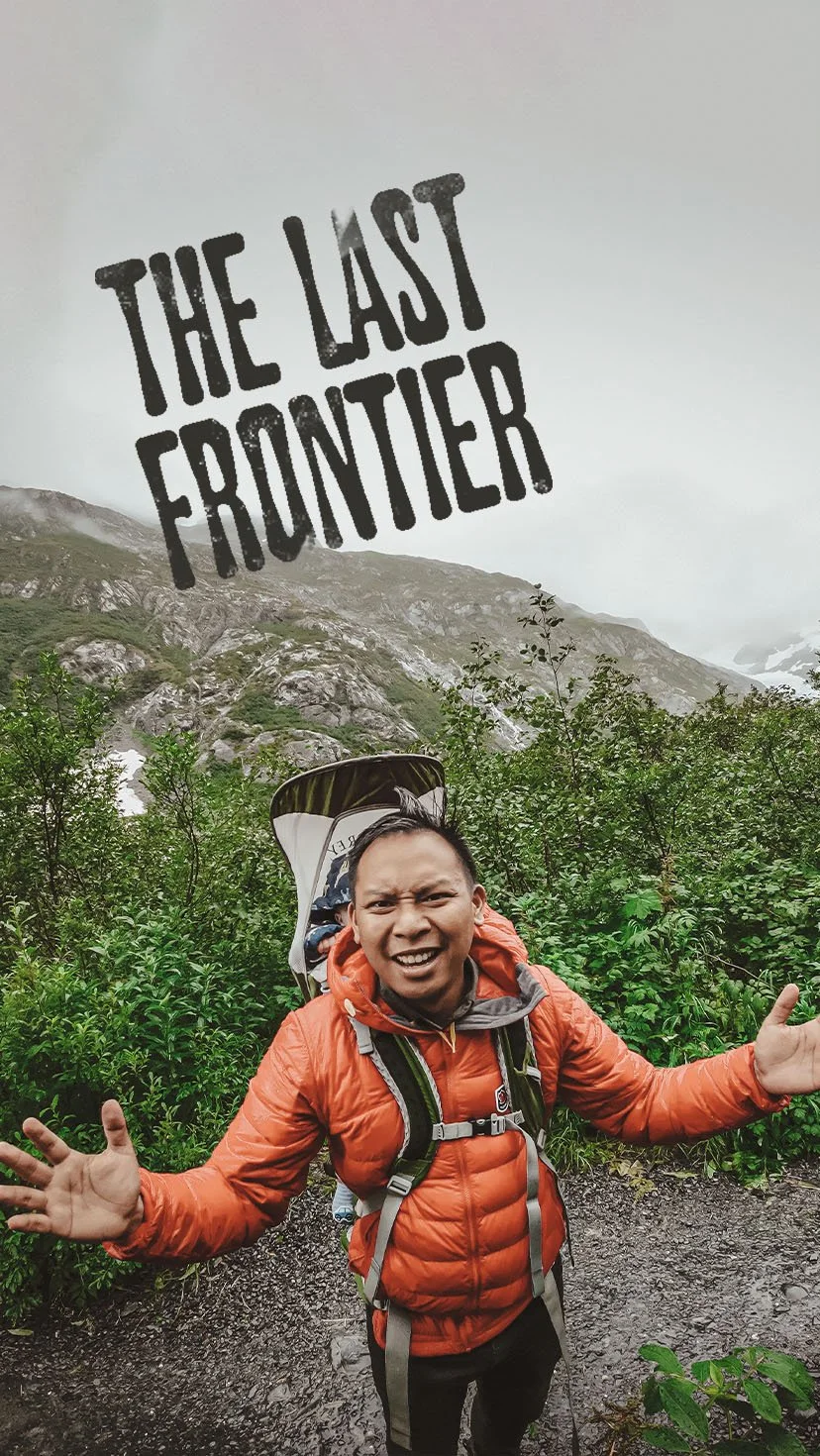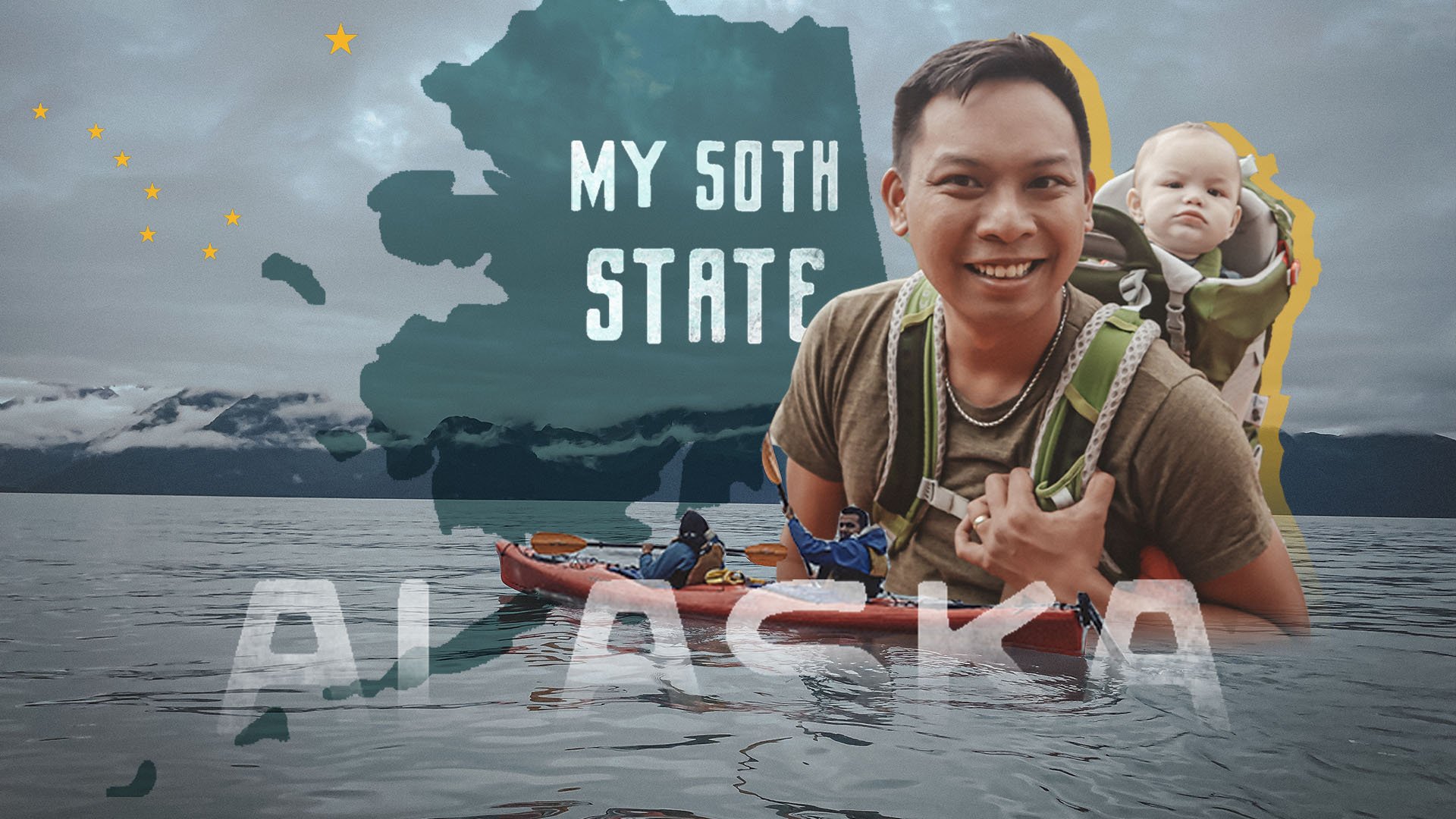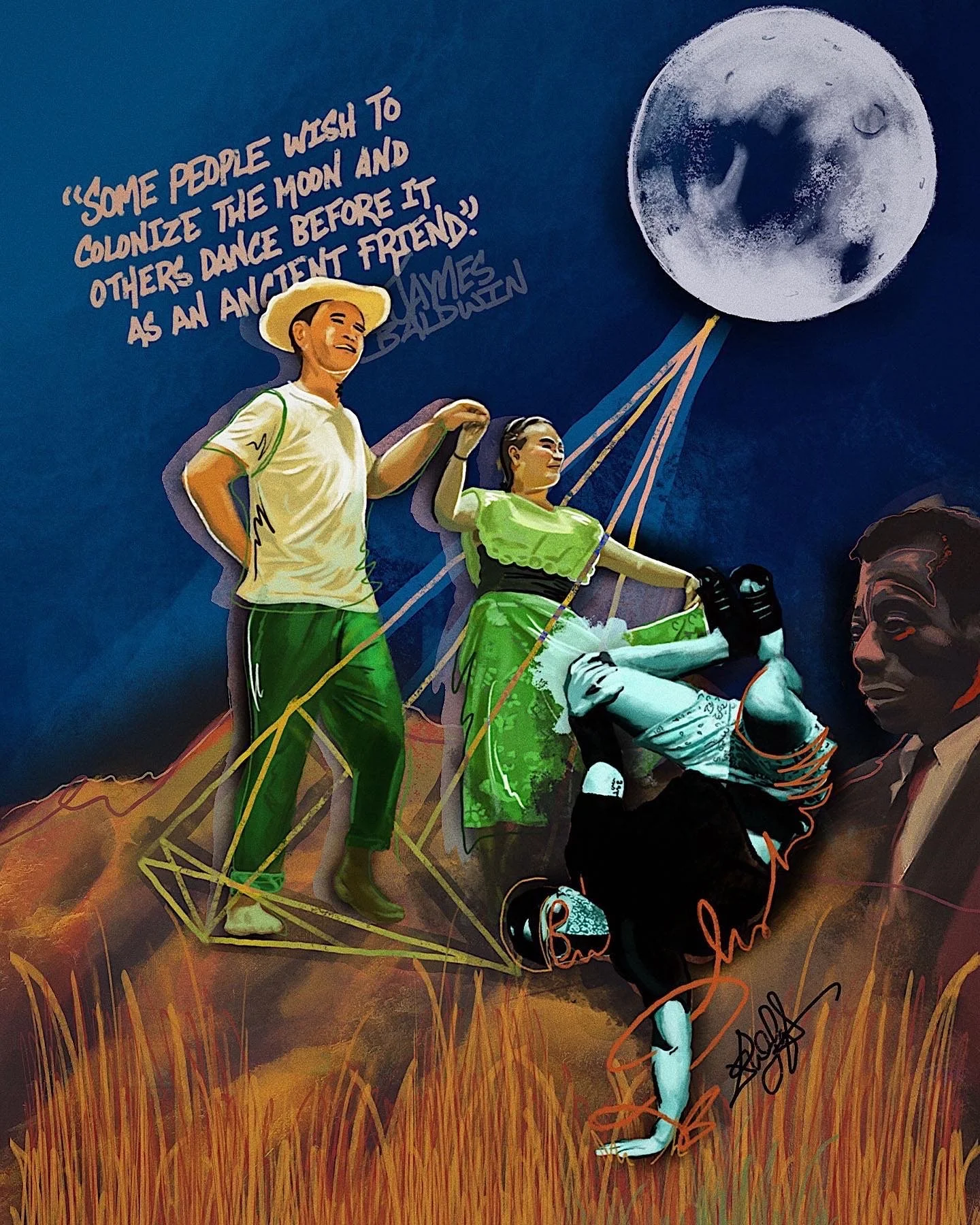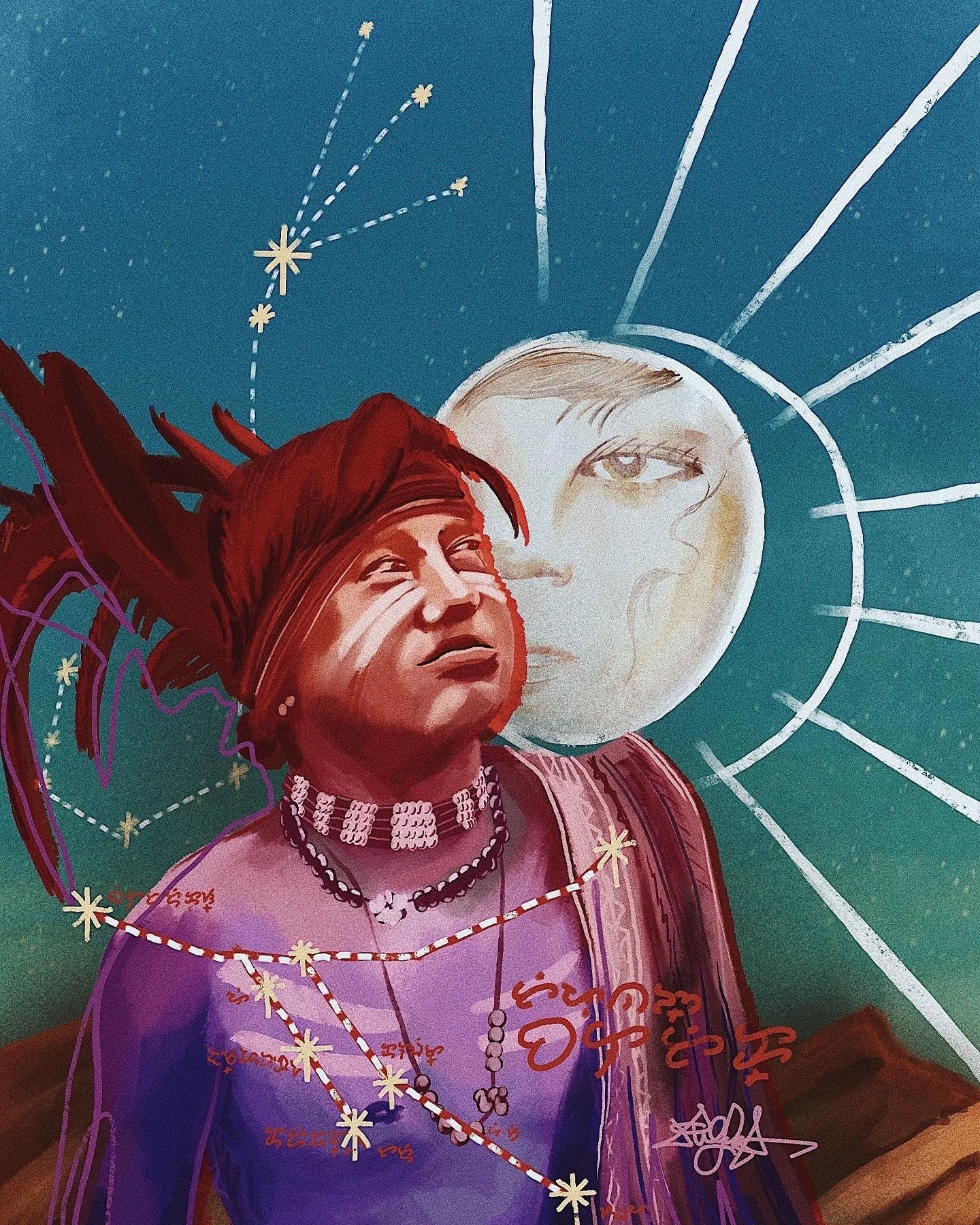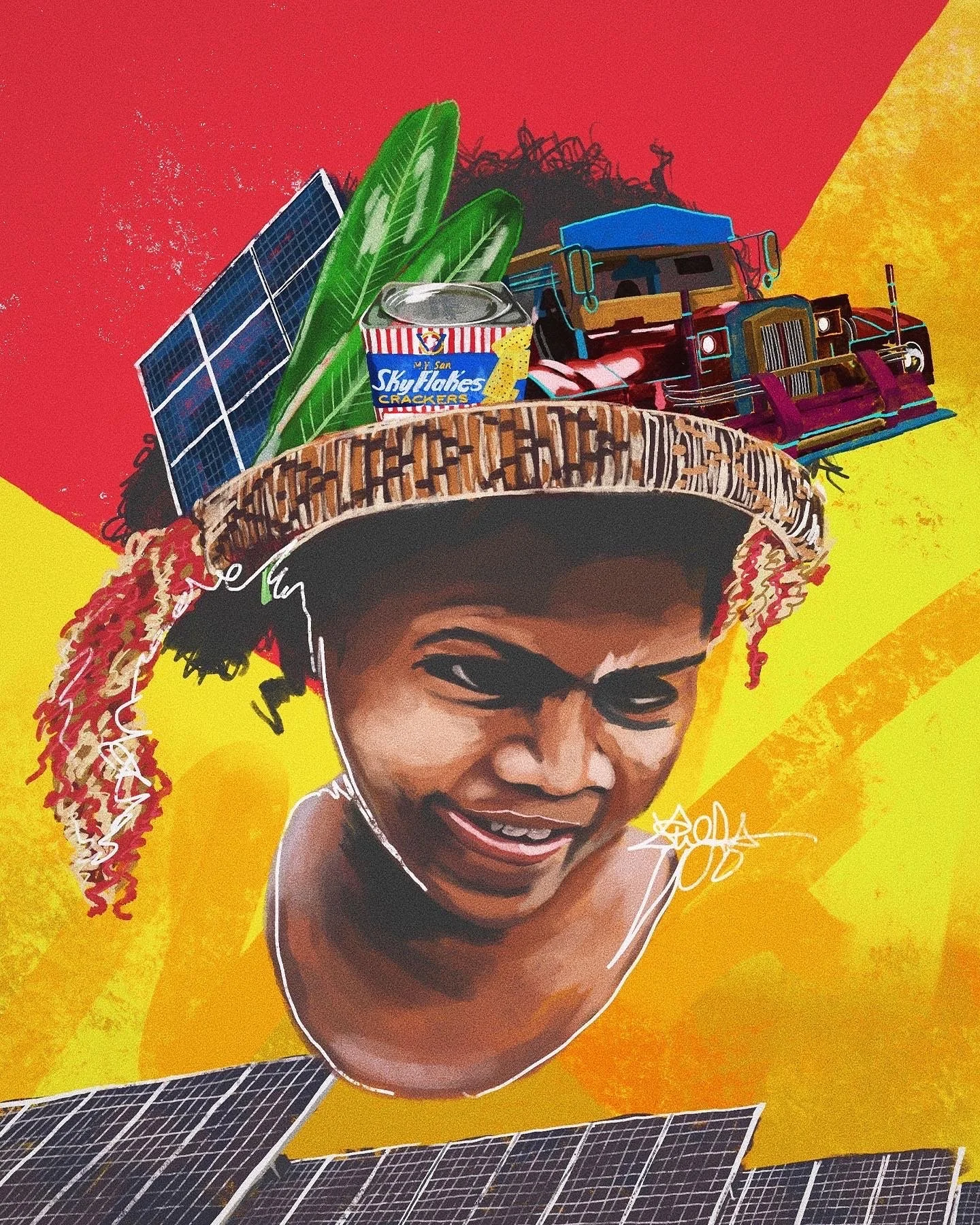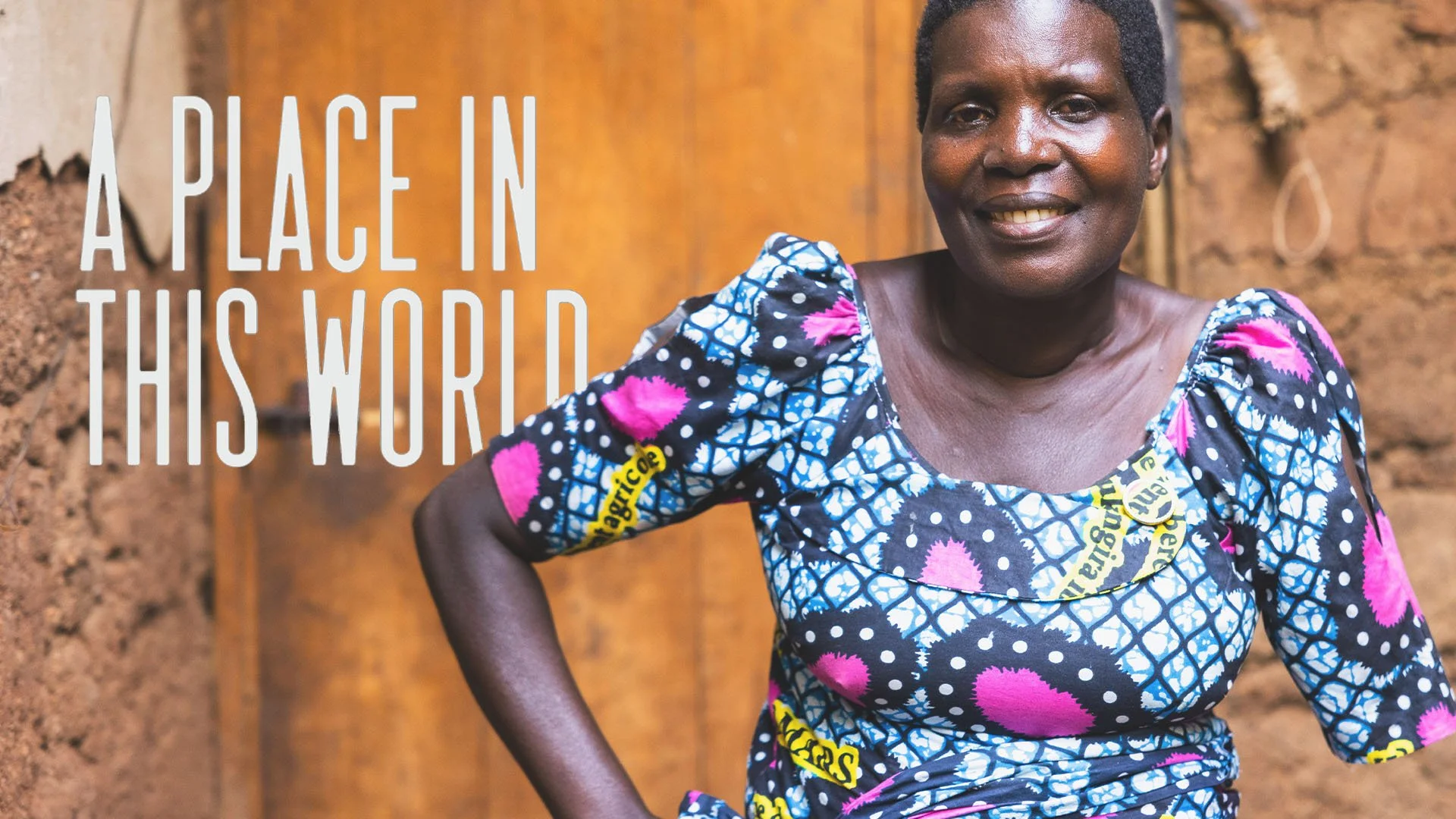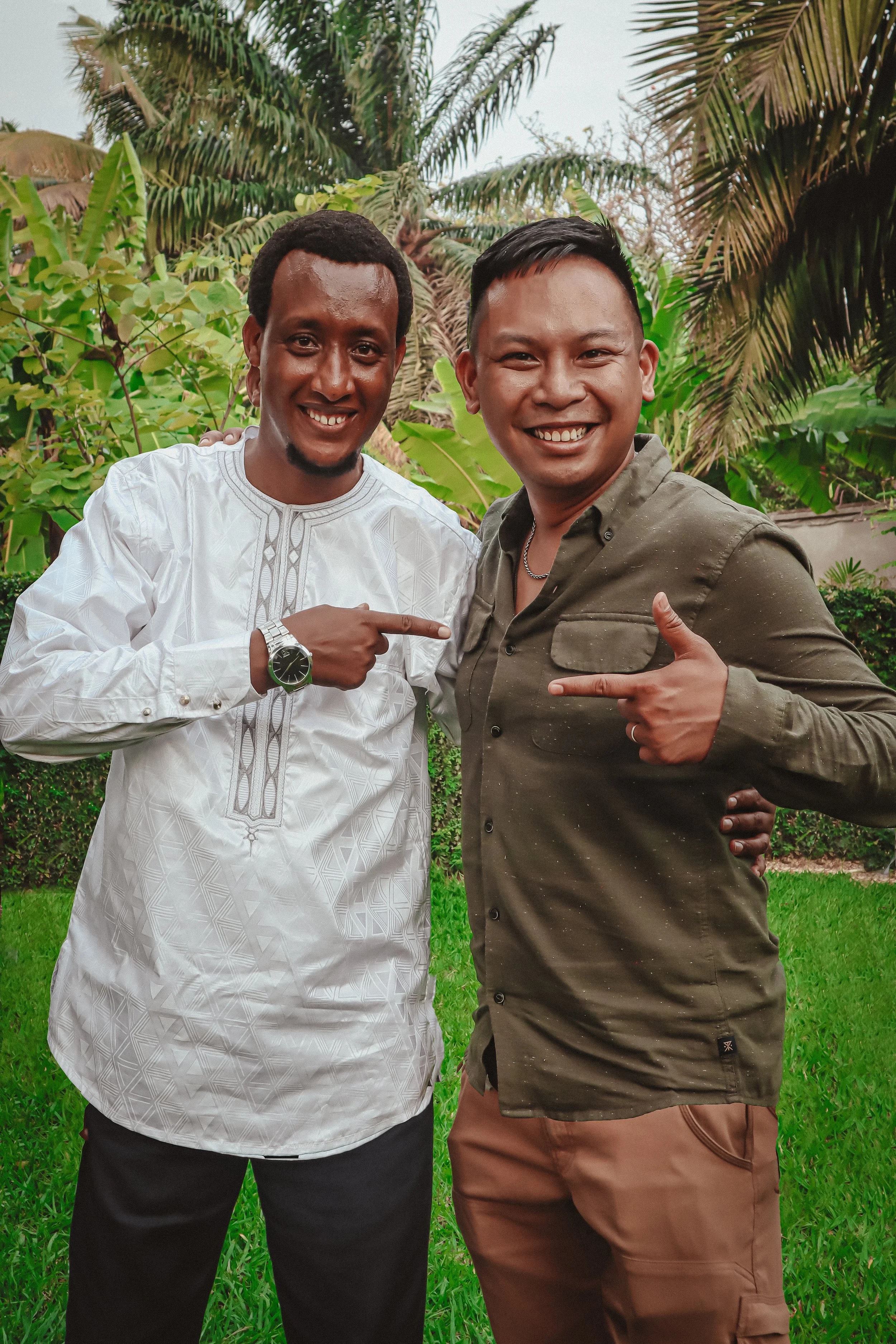2022 was a year where I kind of got to experience all the things I’ve wanted in life pretty much becoming a reality.
The chance to do creative work that helps people.
Opportunities to see the world and have regular international adventures.
Oh, and kids. A big family.
I also experienced the challenge of putting it all together, making it all fit into the constraints of 24 hour days, while three kids under three kept our hands full.
Here’s a little video about the whole ride.
30 Rules for Life and Adventure
Love the process.
It’s really all about the process, but it’s easy to get fixated on the outcome. Learn how to treat love and life and work a bit more like play. Make having fun a priority, and you’ll be surprised at how much this improves your outcome. (But also, watch old clips of Ken Griffey Jr. dominating baseball while looking like he’s having more fun than anybody. It’s kinda like that.)
Plant trees to offset your carbon footprint.
The planet really needs some love, planting trees is an insanely effective solution, and it’s really affordable for even the average person. Go carbon positive with your travel, energy use, and diet.
Don’t half-ass things.
As much as possible, avoid situations where you can’t jump in enthusiastically. If something doesn’t deserve your deep engagement, it likely doesn’t deserve your shallow attention either. The rule “you get out what you put in” applies to a very large percentage of life.
Eat fewer meals alone.
Science backs up how helpful this is. Studies show that the biggest single factor for unhappiness is regularly eating meals alone. Find someone to share your lunch break with. Have regular dinner parties. Think of every meal as an opportunity to share a moment.
Align yourself with humble leaders.
Find people who acknowledge their shortcomings, who freely say “I’m sorry,” “I was wrong,” and “I owe others credit.” Learn from them.
Be consistent with your generosity.
If you believe in a cause, or feel fired up about something you want to change in the world, find an organization you can get behind and support them monthly. Actually subscribe. A modest, steady, monthly gift is way more valuable to a good organization in the long run than a wildly successful viral campaign.
Reject the default setting.
Living by a “default setting” means letting somebody else’s idea of normal shape things in our life. Instead, do a deep examination of what your actual values are and craft a life that’s in shape with that.
Whenever you write, try to make these two things your top priority: being clear and being helpful.
Usually, they go hand in hand.
Receive criticism and praise graciously.
Don’t pass the blame, and own up to your mistakes. If the critique is unwarranted, learn how to hear it without internalizing it. When you receive praise, share the credit with somebody else who helped you. (There’s always somebody who helped!)
Curate wonder.
Use bookmarks to save the tweets, posts, and quotes that really make you think. Write down a collection of ideas that change the way you think. Collect these as you encounter them and go back to them. And every now and then, just make a list of things that make your heart happy. This exercise is a bit like mapping the genome of your human soul, and if nothing else, the practice of collecting these and going over them will be a big mood boost.
If you want to get better at something, do it consistently!
Want to write better? Write every day. You’ll make a lot of work you aren’t too proud of, but because you keep showing up, you’ll also produce some gems. And even the duds won’t be a waste, because they help you sharpen your skills.
Think of your attention as a currency, and spend it wisely.
Are you tired of how much press a politician is getting for something stupid they said? Oftentimes, outrage only gets them even more coverage. Instead, give an attention boost to artists, difference makers, and elders who are much more deserving. (Side note, this is totally true on social media, where the quality of your experience hinges on who you follow. Curate a feed that makes you better!)
Learn how to be good at conflict.
Appreciate conflict. Literally, you can’t have a story without conflict, so don’t expect an interesting life without a little adversity. Learn how to have healthy conflicts. Challenge actions rather than people. Use “I” statements. Make your goal understanding the other person, rather than running them over. At the same time…
Debate less and ask more.
You can learn from anybody. Approach people you have differences with by asking sincere questions and curiosity. The people with the richest insight are often the most curious. Those who seem to have all the answers know a lot less than they think.
Promote positivity, but beware of toxic positivity.
There is a big difference between being the type of person who chooses to look away from human suffering by getting lost in feel-good memes, and the type of person who learns how to find hope in the hard places. Learn to be the latter.
When you create, aim for connection rather than originality.
Originality is a myth. Creativity is less about originality and more about giving people tools to access something they already know, believe, or feel deep down.
Identify 150-200 people that you can help with your life.
Especially when the world feels overwhelming. The news gives us a look at problems that affect 8 billion people. But, Dunbar’s Number suggests we were socially evolved for a tribal setting of 150-200 people. Trying to change the world will always feel unbearable, and it can distract us from our opportunity to make a world of difference for 150-200 people.
Appreciate the Enneagram.
It’s not a science, but a language. As a language, it’ll give you tools to understand and communicate your inner life.
Understand the purpose of adverse emotions.
We experience fear to help keep us safe. We experience anger because we have an innate sense of justice. We experience sadness because things in our life have value. These emotions aren’t pleasant, but they aren’t bad. A full life makes room for each of these.
Whenever you travel, find a local to show you around.
Don’t know anybody in the area? See if you can find a friend-of-a-friend. A person showing you what they think is noteworthy is infinitely more interesting than a packaged tour.
Keep learning.
School is one way to learn, but it is far from the only way. Most of the practical knowledge I use daily comes to me from podcasts, books, even Twitter accounts I follow. And of course, travel encounters and meaningful conversations. You can use YouTube or Skillshare to teach yourself so many things. Keep investing in yourself.
Diversify your reading list.
By gender. Race. Ability. Orientation. Class. In fact, diversify everything you consume. Watch more international films. Listen to music not in English.
Develop your personal brand*
*But don’t overcomplicate this. This basically means, be clear at showing other people how you’re able to help them.
Know what “enough” looks like for you.
Given your situation, identify how much money you’d need to live well in terms of generosity, food, shelter, health needs, fun, travel, etc. Identify a number you’d be able to live off of, and a number that’s a little more ideal. You might be surprised how ordinary that number looks. As you approach that amount, money no longer makes as many decisions for you.
Always be a rookie.
Try to always have some endeavor in your life where you’re a total beginner. The open, humble mindset of a beginner is a valuable, elusive thing.
Learn how to interpret data.
Data may be good evidence, but remember that it needs some context. Also consider the shortcomings of a study and what it isn’t able to tell you. It’s less about being a numbers whiz and learning how to think critically.
Radically commit to believe the best in other people.
You might not be right all the time, but you will be right frequently. More importantly, you’ll be more likely to act compassionately. Look for the most charitable explanations of other people’s behaviors, especially when you don’t understand them. Refuse to simply accept the explanation that someone is being dumb or evil.
Take pictures more mindfully, then get them printed.
Now that photography has gotten extremely accessible, it’s easy to wind up with a large collection of mindlessly taken photos that you hardly ever look at. The practice of curating helps you remember your life. Having them printed out makes it more likely for you to appreciate those moments.
Be wise about staying informed.
Understand what drives media outlets to choose the stories they choose. After you take in a news story or analysis, ask yourself if you actually learned something new and valuable or if you simply feel angry or anxious. If the latter is true, what you saw was entertainment disguised as news.
Learn how to live with both urgency and patience.
Life is short, so don’t waste time. At the same time, there are no shortcuts to the best things in life. I can’t really explain how urgency and patience seem like opposites but are both necessary ingredients in a good life, but I do think maturity looks like growing in both directions.
150 Favorite Things
1. Love Like There’s No Tomorrow by The War and Treaty
2. Factfulness
3. Maps
4. Map-based board games: Ticket to Ride, Catan, Pandemic… not Risk
6. Baymax
7. Growing Up by Run River North
8. My Osprey AETHER Backpack (And the POCO AG version for carrying a baby around)
10. Just Mercy/Bryan Stevenson/The Equal Justice Initiative
11. Improv
12. Cape Town
13. Xiao Long Bao
14. Salar de Uyuni
15. Iceland
16. Baobab trees
17. Psych
18. Maple Trees
19. Boxers & Saints
21. The National & St. Vincent’s cover of Sleep All Summer
22. Marylinne Robinson’s Gilead
23. Great Pyrenees
24. Up
25. Brad Montague’s story about a balloon
26. Manifesto: Mad Farmer’s Liberation Front by Wendell Berry
27. Reforestation
28. Café du Monde in New Orleans
31. These San Diego Breweries: Modern Times, Second Chance, Belching Beaver
34. Mezcal
35. The Big Sick
37. The Creative Pep Talk Podcast
38. Geography Quizzes on Sporcle. Especially this one, this one, and this one.
39. Good Eats
40. The Patagonia Nanopuff Jacket
42. Codenames
43. Alpacas
44. Ethiopia
45. Procreate
46. Yasmin Newman’s 7,000 Islands
47. Ben Howard’s Old Pine. And the rest of his Every Kingdom album.
48. Trevor Noah
50. Gallant’s cover of Sufjan Stevens’ Blue Bucket of Gold
51. The Swedish Chef
52. Pub Trivia
53. Kevin Love’s article: Everyone Is Going Through Something
54. Pixar’s Recipe for Good Storytelling
55. Arrival
56. Patagonia. The place, but the brand is nice too.
57. Thomas Merton
58. The Children of Blood and Bone series
59. Nikkolas Smith’s illustrations
60. Mitch Hedberg
61. Pop Chart Co.
63. Italy
64. Mostra Coffee in San Diego
66. My Ice Cream Trinity: Salt & Straw, Jeni’s, McConnell’s
67. Akimbo
69. Amsterdam
71. Growlithe
72. A Map of Salt And Stars by Jennifer Zeynab Joukhadar
73. Malaysian Food
74. Andrew McCutchen
75. Oatmilk… particularly Planet Oat
76. Dunbar’s Number
77. Vampire Weekend
78. Desmond Tutu
80. Dee Gordon’s home run after Jose Fernandez’s death
81. Enneagram 8s. (I’m a 7, but I think healthy 8s are my favorite)
82. Project Drawdown
83. Mangoes. Mango Sticky Rice. This café in San Diego called MNGO.
85. This guide to the depths of the ocean
86. Vermont
87. Pho
89. El Camino de Santiago (bucket list item for sure)
90. Father Greg Boyle / Homeboy Industries / Tattoos on the Heart
92. Coco
93. The Canon M50 mirrorless camera
94. The World Cup
95. Jane Goodall
96. Dan Harmon’s Story Circle (The Hero’s Journey, basically)
97. Blue Star Donuts in Portland
98. This Philosophical Dichotomy Test
100. Commonplace Books in Oklahoma City
101. Yerba Mate
102. This letter from John Steinbeck to his lovesick teenage son.
103. The Book of Common Prayer
104. Montreal
105. New Zealand
106. Pico Iyer’s TED Talk
107. Dave Chang (His podcast, Ugly Delicious, and Breakfast Lunch & Dinner)
108. Pre-SNL stuff from The Lonely Island
109. If the world were 100 people
110. The Dissect Podcast; especially their Kendrick Lamar seasons
111. Ken Griffey Jr. & Ichiro
112. The Tick
113. The Skinny Pancake in Montpelier
114. Public Speaking
115. The Secret Life of Walter Mitty
116. Leland Melvin
117. Sufjan Stevens
118. Dwayne Wade (and this commercial celebrating his retirement)
119. This list of 100* ideas from the worlds of philosophy, sociology, economics, and psychology
120. The Oregon Ducks
121. Preemptive Love Coalition
122. The UNESCO Cities of Gastronomy
123. Boyhood
125. The Good Newspaper
126. Pizzeria Magnifica in Rome (arugula, bresola, & burratta pizza)
127. Jurassic 5
128. James Clear (Great on Twitter, via Newsletter, and Atomic Habits)
130. Travel Is No Cure For The Mind by More to That (and this response by Trevor Huffman)
131. Roy Halladay
132. Maptia
133. One Tree Planted
134. CreativeMornings
136. Large live-edge dining tables
137. Reconciliation stories from Rwanda
139. Surprise Yourself by Jack Garratt (and its music video)
140. Philippine Eagles
142. These African culture emojis
143. That thing Ira Glass said about taste and creativity
144. The KBO (Korean Baseball) & NPL (Japanese Baseball)
145. Chopped
146. The Interfaith Rainforest Initiative
147. The Sierra Nevadas
148. North Cack by G. Yamazawa (for running, workouts, & such)
The Archive
Trevor Noah
One of the best things I did the last time I was in New York was make it to a live taping of the Daily Show. We missed Trevor Noah having Joe Biden as his guest by ONE day and wound up with Michael Che. 🤷🏾♂️ Still a good time.
Trevor Noah is on a short list of people I consider a real inspiration in my approach to storytelling.
See, I tell stories in the arenas of social justice, the environment, human rights… etc. So often, the people I meet have gone through some immense suffering. The topics are serious and often heavy.
My personality, on the other hand, is a lot less serious. I dislike taking myself too seriously, and try and do most things with a playful energy. So often my personality and work are in conflict.
Trevor Noah is one of the few, few examples I have of someone who blends the heavy and hilarious in a way that’s sincere really well. He’s got a knack for finding the absurdities in a chaotic world to spark a laugh, and an instinct for when something else might be more appropriate.
Interested to see what Trevor Noah does next. While he totally made the Daily Show his own, he’s a much more expansive storyteller than the political lane often allows him to explore, and I usually find his musings on life even more interesting.
Greenwashing the World Cup
Well, that was a phenomenal World Cup. I’ve been an Argentina fan for a long time and that was the most dramatic fashion I could’ve seen on the path to Campeones del Mundo.
On the other hand, the World Cup itself… the logistics, politics, environmental concerns, and social issues… that wasn’t as celebratory.
I’ve learned a lot over the past few months about a lot of the question marks surrounding Qatar’s rise to prominence and their global spending spree. From the inhumane work conditions that built the stadiums to the anti-LGBT regulations to all the bribes and scandals behind the scenes at FIFA.
I’ve seen a lot of great videos and podcasts breaking down those things, but I decided to dig into one more specific aspect of the Mundial… the environment. More specifically, Qatar’s suspect claim that this World Cup would be a carbon neutral event. This raises the question… can someone ever truly be carbon neutral?
I know the 2022 Cup is in the rearview now, but these questions aren’t going away. The mistreatment of migrant workers, the questions around carbon offsetting, and the way we approach nations with anti-LGBT policies… those questions remain.
A Year of Raising Three
A whole year with parenting three bambini under three. ✅
I always wanted a big family. I grew up an only child, but life always felt better when the house was full. Just didn’t think I would fill mine up quite in this fashion.
Almost anything I can say about raising three under three seems so obvious, why even say it? You always have your hands full. (Duh.) It’s hard to find time to do anything else. (No duh.) But in spite of how obvious these statements feel… it still feels like the only way to grasp the nature of the challenge is to go through it. (Props to the other parents of multiples out there… we have a way of finding each other.)
Three kids under three tests every part of your life. Finances. Marriage. Immune systems. There are solutions that work for one kid that simply do not work for three. Hell, there are solutions that work for three that don’t work so well when they’re all under three. And it’s hard to defer so many wishes and healthy habits to that undefined oasis of “when the kids are a bit older.”
A younger me would’ve said stuff like “I want to be rich with experiences, not money.” Cheesy but sincere. And I think that was the moment God set the timer on twins for 2021.
There are exceptions, but it’s a bit logic-defying how the hardest things we face are quite often the things we’re most grateful to have done in the end.
Antigua Coffee Crawl
If you’re a coffee lover and want to do a little more coffee tourism, Antigua should probably be pretty high on your list. One key reason is that you’ll get a good taste for both ends of the process: the cultivation of coffee, and the coffee shop scene, which is just as fun for the snooty coffee snob as it is the clueless backpacker who just wants the vibes.
I’m probably more of the latter, but thanks to some coffee tours… I’m learning!
Here are some of my favorite spots around town, each with its own unique forte:
☕️ Kaffee Fernando for a cozy spot that feels like home
☕️ Rainbow Cafe for a bohemian backpacker feel
☕️ Cafe Boheme for the rooftop views
☕️ Artista de Cafe for drinking pinky up
The Last Frontier
When I learned Alaska’s nickname was the Last Frontier… it struck a chord. Looking back, it’s kind of a loaded moniker, but at the time it stood out because I was only 4 or 5 states away from seeing all 50, and I just knew I was supposed to save Alaska for the very end.
I wanted to finish with a bang. I also wanted to celebrate the milestone with friends and figured it’d be much easier to convince people to join me in Alaska than North Dakota.
Truly, I’m glad I saved it for the end, because despite it being my last state… it’s hopefully the first of many visits to Alaska. It’s such a large state that simply dropping in on one spot within will still leave a lot left to explore.
Who knows when I’ll be back in Alaska, but I really wouldn’t mind if it were sooner rather than later.
World Cup 2022
WE LOVE THE CUP.
I mean, I’ve also gotten quite the blitz education in everything questionable Qatar has done over decades, and really, every host in recent history has come with its blemishes… but we’ve also seen so many matches played with a ton of heart. That’s football for you. The beautiful game that persists in spite of ugliness.
All my World Cup memories surround things like travel, gathering in pubs, or going out to a town square with a hostel’s worth of new friends to watch on a big screen. Whether it’s bottles of Taiwanese lagers, soju, or cups of chai that accompany the game… I absolutely love that feeling of being connected beyond geography and culture.
Wish I had the time and energy for a drawing for each club… Morocco especially, right now. But here’s the three you get from me. Korea’s got a bright future ahead. Messi perhaps having his best shot. And Belgium… well… I expected more from Belgium, but so be it.
Food, Farming, and Volcanoes in GUATEMALA
If food tells the story of a place, then some of the greatest storytellers should be the people who grow the food, right?
That’s how it’s been in my experience, which is why I most often feel like I’ve gotten to know a place once I’ve set foot on a farm.
In Guatemala, it had to be a coffee farm, of course.
Guatemalan coffee is known all over the world, and while I visited Antigua, I went out to a new local coffee shop practically every day. But the experience felt incomplete until I met Angel and Francisca. They helped me understand what it was like to see rural Guatemala change over decades, the challenges that farmers face during the climate crisis, and their own unique experiences as parents. I left in awe of how much we had in common.
This is what I love about going places.
Booknotes
BLACK HISTORY MONTH
SETH GODIN
BELIEVE THE HYPE
Mental Health Helpers
BLACK MEN MEMOIRS
Will they still have glaciers?
Glaciers have always been inexplicably appealing to me. Every time I’ve seen images of ice caves, blue tinted climbing glaciers, and Arctic tundras, I’ve also felt a longing to be there. Surrounded by the ice. Feeling the frigid air bounce off the ice and back towards my skin. When I finally had a chance to visit Alaska, one of the top things on my list was to spend some time exploring ice. I didn’t quite get to do a full on ice climb, or crawl through ice caves. Juggling three kids meant that would have to wait. But I did make it out to Byron Glacier, and for the time being, that was plenty.
•••
On paper, the hike to the glacier was easy. But we had our own added challenges that we brought with us, namely in the form of three kids under the age of three. Two weren’t walking yet, and could be strapped into a pack for the hike, but it was still a pretty young crew. It was also a wet day. Southern Alaska had been trapped in an incessant summer storm for about a month. I was told this was atypical, but perhaps a new unpredictable consequence of a changing climate. Living in a rain-deprived California, I gladly welcomed the precipitation, accepting the added wetness of the hike as part of the whole experience. The moisture gave every green thing we passed an extra shine, so the leaves that lined our hike popped like emeralds. Soon enough, the glacier was in view.
Being at the foot of a large glacier that grew as it ascended up a slope meant being at the part of it that gets interrupted by a river created from its own melt further ahead. I watched the steadily flowing water. The sound of the water flow created it’s own symphony, playing a little rough with the chipped rock floor below. This runoff would feed so many things on its outbound journey. The interruption created a few hollowed out spaces in the ice. Caves. They didn’t look like the most stable formations so I kept my time there short and shallow, but it was still mesmerizing to have walls of glowing blue ice rise up around you. I ran my hand against the ice wall. It was as hard as anything I’ve ever felt. The least desirable thing to use as a punching bag. And yet, I couldn’t help but think of its vulnerability.
•••
The image of a melting glacier is about as stereotypical as a climate change trope can get. You just need a sad polar bear clutching to it. But that image reflects a reality. Glacier National Park contains about 26 glaciers, a staggering decline from the 146 that were identified back when the park got its name. All of the 26 survivors are now much smaller. As I stepped over ice sheets with a nine month old on my back, and his two siblings in the vicinity, I wondered if they’d even have glaciers by the time they were old enough to plan their own trips. Would this be something they could do with their kids, or would it be too late?
•••
Climate anxiety is gaining more and more attention, and those in the mental health arena are adapting very quickly to better account for the ways the climate crisis takes a psychological toll. But our relationship with our natural surroundings is an ancient one, and people have always felt grief or dread around environmental damage. At some level we know the damage is done to us as well. Everyone’s experience with climate anxiety is valid, and some might say it’s perhaps the emotional response that makes the most sense. Yet, as valid as the grief or anxiety may be, they point where they become disruptive is when it freezes us from playing our role in protecting the climate.
The reality is, even if we got everything right behavior-wise, in regards to climate change, we would still be dealing with the effects of the damage that has been done. That doesn’t mean we shouldn’t try, for the sake of reversing what happens before it gets even worse. But the past few months have been a preview of further things to anticipate. Natural disasters, heatwaves, countries struggling underwater. In order to stay in the fight, we need to develop our own capacity to experience joy and to stay motivated in spite of this sort of feedback.
•••
Climate joy. To me that looks like being able to delight in creation, to erupt in wonder over its mechanics, and to share the experience of discovery with others. It includes celebrating the wins in our efforts to protect it and being reminded of the value of all living things. Almost all of the fiercest environment protectors I know have a story that begins with a childhood spent among the trees or waters. Climate joy is a bit about stubbornness, but also defiant resilience. It’s about maintaining the urgency of taking action, but with a grounding that allows you to do so year after year without burning out. And a day spent around a fragile natural wonder is a compelling invitation towards climate joy.
ALASKA | My 50th State
A few years ago, I realized I was getting pretty close to having been to all 50 states. I decided that of the few I had remaining, Alaska easily seemed like the coolest. As I kept chipping away at the others, I also started making plans to get to Alaska ahead of my 30th birthday.
I thought it would be really cool to rent some large cabin and invite several friends to share the celebration.
Then we got pregnant and put it off one year.
But then a pandemic happened.
And then we got pregnant with twins.
Finally, this year, we made good on that quest and I finally checked off state number 50! And we did have some amazing friends who weren’t intimidated by traveling with three kids under three. Jesse & Raquel, you two rock.
I’m extremely glad I saved Alaska for the very end. The knowledge that its mountains, forests, and tundras stretched on until the very top of the world was invigorating. This was a really, really good trip. Well worth the wait.
Make cities for people, not cars
I lived in Siena, Italy for a summer… a really long time ago at this point.
There are a few memories that still feel vivid after all these years, but perhaps none more so than my morning walk.
I took classes in an old building near the center of the city, Piazza del Campo, and in one of the northern districts. It was only a six minute walk, done brisky, but who would want to rush it? Most days, I would put headphones in… something along the lines of Sigur Ros, and take in the whole setting like it was a movie.
Every pizzeria. Every sculpture that had survived centuries.
The same faces I saw each time. The two nuns who always walked together. The guy with the chow-chow.
It did feel like the opening number of Beauty and the Beast just a bit. And I felt really in love with life.
The following year, I lived in Argentina.
Buenos Aires has an extensive subway system. It’s frequently packed to the brim and isn’t really celebrated by culture the way other transit systems are, but it functions well enough to take you anywhere around the greater Buenos Aires area, which is pretty expansive.
I loved it. Being able to emerge at any given point in an endlessly fascinating city and discover new things was a treat. Most times, the commute itself was good. My 20 minute journeys were perfect for doing some reading. I finished the whole Harry Potter series in Spanish, which was actually pretty good for language learning.
•••
In between Italy and Argentina was student life in Santa Barbara.
There my daily commute was all about the bike. I went from beach cruiser to hybrid, knowing that every gap between classes was a chance to feel a good breeze on my face, to breathe ocean air, and to be a little more outdoors.
•••
All of it– walking around Siena, biking around Santa Barbara, or taking the train around Buenos Aires, are better than what most places have: driving everywhere.
The more I’ve seen and thought about it, the more I find myself at odds with car dependency.
First, there’s the social isolation. The opposite of the energy I felt in Siena. It’s far too easy to go from a climate controlled home, into a metal shell of a car, then to an insulated office… picking up drive-thru food along the way, keeping interactions to a total minimum. I get that extroversion isn’t everyone’s thing, but this imbalance can’t be healthy.
Speaking of health, there’s another big factor. Walking is really, really good for you. And we’ve eliminated so much of the walking most humans have done throughout history from our daily routines. Of course, you’ll always want to accommodate those who can’t, but at this point, we’ve made it hard to walk places… even if you want to.
Also… vehicles are just deadly. It’s one of the highest causes of death for younger people, which often gets taken for granted because it’s been normalized. But it’s absolutely preventable.
•••
At scale, reducing car dependency will not only save pedestrian lives, but all kinds of life, in the form of climate mitigation. About a quarter of greenhouse gasses are created by the transportation sector, 3/4ths of which come from road transit.
At a time where the mass upscale of every climate solution is needed, I get especially excited about creating cities that are less car dependent as a solution… largely because I know the benefits extend far beyond the climate.
Cities where people don’t spend their days shelled off from one another in cars are more vibrant. Instead of seeing strip malls filled with the same combination of chain retailers over and over, you’re more likely to see beloved local businesses claim their space and thrive. Instead of spending large portions of one’s life sitting in traffic, one can read, think, or be a little bit more mindful of the world around.
A world with fewer cars would be great for the environment. But the place to start would be to reduce car dependency. Give people options. Make the cost accessible. See what happens.
In Siena, Buenos Aires, and the campus of UCSB, cars were options. Just not all that desirable compared to the alternative.
The US-19 in Pasco County, FL. Over 1/10th of pedestrian-death hotspots were on this road which features a panoply of retail stores and chain restaurants that are largely unsafe to walk between, nine lanes in most spots, and cars frequently exceeding the 55mph limit.
Mostly empty parking lots in Buffalo, NY… one of the first cities to end requiring parking lots to be built with new buildings. In many cities, as much as a third of land is used for parking, much of which goes unused. The lack of land, meanwhile contributes to a nationwide housing shortage.
Recently, I read a tweet along the lines of:
People will think of college as the best time of their life; really, it’s just the only time in their life they’ll get to live in a walkable community.
There’s something to that thought.
A highlight from that era of my life was living in the same square mile as my closest friends, being able to visit each other spontaneously on foot, bike, or longboard. Along the way, you never knew who you might bump into. Oftentimes, a very good mutual friend who decides to also come along for the visit.
I think of an old favorite coffee shop where I could just go when bored, because there was a good chance friends would visit. Seemed like the kind of thing that only happened on TV shows… but walkable cities make an impact.
•••
Even if you’re not stopping to talk for 20 minutes with every single familiar face on a regular morning walk, I still think there’s enough value in the fact that those faces are familiar. “Weak ties,” or perhaps in this case, “extremely flimsy ties” still play a significant role in someone’s sense of belonging and relationships.
It’s also probable that in today’s world of screens, social divisions, and stereotypes dominating conversations, we could all stand to see each other a little more. Like, literally seeing each other.
•••
When it’s all that you’ve lived with, it’s easy to accept it as “normal” that you need to drive to get anywhere. It’s easy to never imagine things differently.
When you do finally encounter it, it’s easy to think of it as an exception. Just one thing that makes *insert European tourist hotspot here* magical.
But even those spots weren’t always like that. Amsterdam was quite car dependent in the 1970s. Paris wasn’t a big bike haven until three years ago.
Filipinos in Space
In collaboration with @inheritancemag, I’m happy to present my capstone project from my artist residency, Filipinos in Space!
What does a decolonized vision of space look like? I explored that question in a series of seven pieces of visual art- pushing my own style into new frontiers of fluorescent colors, layered imagery, and complex cultural references.
One recurring theme you’ll see all throughout this series is sustainability. Visions of the future, our Earth, and world’s beyond the Earth all hinge on our stewardship of the planet. In order to shape this future in a just and healthy direction, we’ll need to listen to what ancestral wisdom teaches us.
Filipinos in Space
Dance Before the Moon
In the 1970s, Africa saw rapid decolonization. At the same time, many in the west spoke openly about it as a “dark continent.” Pushing back on the idea, James Baldwin stated, “some people wish to colonize the moon, others dance before it as an ancient friend.”
This was the idea that kicked off my Filipinos in Space art project. I wondered, what does a decolonized vision of space and the future even look like? With exploration being a big theme in this project, I decided to explore new art styles, working with more edgy layers, fluorescent colors, and gradients.
Featured here are two classic Filipino expressions of dance: the tinkiling- the classic showcase of footwork evading the rhythmic snapping of bamboo poles; and classic breakdance. Often understated in the history of hip-hop are all the Filipino contributions to B-Boyism, especially in LA and the Bay Area.
Children of Mayari
“To marginalized people all around the world: your ancestors connected with God long before the colonizers arrived.” This was a point made in a podcast interview with Brandi Miller I heard a while back.
I injected a good amount of Filipino mythology into this piece. In Kampampangan mythology, the creator of the world, Bathala, left the world without a will, leaving his two children to fight for control. One was Apolaki, the god of the sun, and the other, Mayari- goddess of the moon. As they fought with bamboo clubs, Mayari was hit in the eye and became blind. Apolaki became remorseful and they agreed to share rule of the earth, but at different times.
It’s worth noting that these legends weren’t only for the purpose of entertainment, but they also had a practical role. The depicted constellation is a star formation called balatik, because of its resemblance to a traditional pig trap. In certain areas, the arrival of these stars would signal the start of the planting season.
Futuro
This piece is entirely future focused. The Philippines has made huge economic strides in my lifetime, but what does that look like as the climate crisis threatens the future? The Philippines boasts an impressive environment, but also the highest number of environmental activists killed.
It’s important to note that sustainability wouldn’t be a novel concept for the Philippines. For generations, simple ways of living in harmony with the Earth are scattered throughout the culture. From the use of banana leaf in everything from rice wraps to kamayan spreads, finding ways to use natural materials has been a longstanding custom. The virtue of reusing goods is also recurring. If you have a Filipino grandma, you know those aren’t crackers in the Skyflakes tin.
With a rapidly urbanizing population, those traditional values can be applied to modern solutions. With big investments in solar fields, and possible innovations like a solar jeepney (?!) there are many possibilities.
We The Travelers
When envisioning a decolonized version of the future, without colonial conquest, that doesn’t have to mean omitting travel. Filipinos have been travelers for as long as anyone has recorded history. There’s a popular saying in Pacific Island cultures about how the ocean might separate us, but it simultaneously connects us. One can look between the Philippines, but also places like Taiwan, all the way to Indonesia, Malaysia, and India to see how some cultural elements bear a strong resemblance. From the styles of clothing you’ll see in mainland Southeast Asia, to shared language roots with Indo-Malay dialects. There is travel and cultural exchange apart from a colonial approach.
BAYANIHAN
Bayanihan is the a concept that captures the Filipino spirit of neighborliness, solidarity, and cooperation.
The bahay kubo is just one physical manifestation of the concept of bayanihan: a spirit of civic unity and cooperation among Filipinos.One of the clearest ways you can see this visually play out is in bahay kubo- a traditional style of Filipino housing, especially in fishing communities. The design of the house on stilts gave it versatility as water levels changed, and it also invited community participation into a family’s activity. When it became time to move, an entire community helped move a house along with a family, carrying the structure by its stilts.
When we move, we move together.
Ligayang Rebolucion
A Filipino vision of the future would simply be incomplete if it did not contain a lot of space reserved for joy.
Filipino joy cannot be missed by anyone who observes it, but it can be misunderstood. So often it is mistaken for naivete, passivity, or even acceptance of one’s circumstances, even though they may be the product of injustice. Joy in the face of injustice may be one of the truest forms of resistance.
This image is replete with things that are frequent expressions of joy throughout Filipino culture. Basketball, for starters, alongside a night of karaoke and performance. At the center is a Lolo, a household elder.
MNLiens
This project would risk appropriation without proper homage to the other people groups who inspired some of this thought. In particular, Afrofuturism. This design is an unsubtle tribute to one of the most prominent examples of afrofuturism in hip hop, OutKast’s ATLiens. A lot of the album’s theme spent time focused on being an outsider.
Behind the central figures you have Ida B. Wells, a prominent voice in her time against the Filipino American War. Above her is a Buffalo soldier, the one commonly misidentified as David Fagan. These Black American soldiers famously deflected in support of the Filipino opposition. On the upper left is an Aeta girl, a member of the Philippines’ darker skinned indigenous people group, and a reminder of why Black-and-Brown solidarity matters worldwide. Finally, below her is Larry Itliong
Finally, the term Kapwa - finding one's sense of self that is found among others.
A Place in This World
We captured a ton of stories in Burundi, but this one was the big feature.
Burundi faced a really long Civil War from 1993 to 2005. And, as is the case with most wars, a lot of fighting and episodic violence persisted even in the years after that.
Esperance lost her arm in the war. She faced some very real concerns about being received back by her community and finding a place where she belonged. She couldn’t work for a while, and that can really challenge one’s sense of purpose.
I loved meeting Esperance and her husband Deo. Truly a stand-out person. Hepburn Creative did an incredible job making this video to share her story, I had to reshare here.
Couldn't Go To Congo
Three days before my trip to Africa, I got an urgent sounding call.
*We’ve got a situation*
The situation?
A warning from the U.S. State Department because of anti-MONUSCO protests.
I’m not easily dissuaded by travel advisory warnings. For one thing, our State Department kind of issues them pretty freely. A regional flare-up on the opposite end of one of the largest countries on earth? Just post a warning for the whole place, and a few of its neighbors. Not to mention, this is a region where some degree of conflict is taking place somewhere. You really need to pay attention to the immediate area where you’re going.
This time around, however, that’s exactly where the problem was.
I checked in with my friend Birori, who confirmed that indeed the flare-up of protests had gotten pretty bad and that we might have to make alternate plans.
We ended up canceling plans to visit the Congo and focused the entirety of my two weeks in Africa on Burundi. He offered to cross into Bujumbura to meet me there.
As you might imagine, I was extremely disappointed by having to cancel my plans to visit the Congo. Or, postpone them, rather.
For starters, this is the second time in three years I had to cancel a trip to the Congo. I was slated to take this trip in the summer of 2020, before the pandemic gave that a good two year bump. This time, I had the multi-entry visa in my passport and everything.
My interest in the Congo began long before I worked for an organization with programs there. My curiosity began with a stuffed giraffe that some out-of-business company decided to name Zaire. When I read Adam Hochschild’s King Leopold’s Ghost, outlining all of the Belgian king’s atrocities in the Congo, and Barabra Kingsolver’s Poisonwood Bible, which introduced me to Patrice Lumumba, I felt that tug.
I know that the Congo in particular has been on the receiving end of gross injustice throughout history. But I know there’s always more to the story that you won’t see until you’re face to face. I had really hoped to see that this year.
There was another more recent case of exploitation this year taking place in Congo. A big environmental injustice. And I really hoped my belief that there’s always more to the story held true in this scenario.
This is potentially devastating news. Not just for the Congo, but for the whole planet.
The Congo Basin Forest and surrounding peatlands hold a lot of carbon. Maybe around 10% of the world’s CO2 is stored there. The release of that into the atmosphere would be horrific. On top of that, there are many species, including the endangered mountain gorilla, that can only be found in this forest. The biodiversity loss was another serious concern.
Birori understands the environmental concerns of the Congo at a local level better than anyone else I know. He has direct knowledge and experience from working in proximity with local communities for years, and understands how environmental concerns overlap with poverty in the country, its history, its conflict, and so on.
He and I meet at my Bujumbura hotel, and it’s really good to see him for the first time in four years.
He greets us warmly, and expresses his disappointment in not being able to take us to the Congo.
“We had everything lined up,” he told me. “The communities heard you were coming and everything.”
I found it hard to imagine someone more disappointed than myself for having to cancel the Congo visit, but I could see right away that Birori was. He had a lot he was looking forward to showing us.
I suppose there would have been a worse way to have had my trip derailed by the unrest in Congo. It was probably a lot better to have found out about it on a phone call while I was still in California, versus in person while being there. Even if my immediate safety wasn’t an issue, the journey I’d have to take would’ve meant hours on foot hiking through areas with no reception. That’s a long time to leave my family hanging.
While spending time with Birori, I do get to ask him a lot of questions about how his work is going, about his life, and about things in the Congo. I’ve gotten accustomed to Birori’s style, and like usual, his words reveal that he concurs that the threats to the Congo Basin Rainforest are real and severe. At the same his demeanor and confidence appear undaunted in the face of this threat.
He tells me about how he’s already been doing work with the communities living on the edge of this forest, almost as if they’ve been braced for a challenge.
Birori reminded me of something important. If people come into a community wanting to take away its trees, they do not get very far if that forest is one that the locals have come to value.
Yes, these communities may be vulnerable, but they aren’t helpless.
Community cooperation or opposition makes all the difference with what happens to a forest where people are living. You see this work both ways. Many reforestation efforts fail, because they happen *to* people, rather than with them. In those scenarios, people see the trees as an opportunity for short-term financial relief, and cut them down.
However, when people are involved in the process and understand the long-term strategy for keeping a forest to maintain the health of the land, it changes everything.
Effective forest protection happens when local communities have ownership of the process.
I found my conversation with Birori immensely encouraging, at a time where I really needed that encouragement.
He reminded me that, although the news was disappointing and threatening, it wasn’t an immediate switch to disappear the forest. The work will be done on the ground, with local communities, in places that are climate vulnerable and often overlooked by the headlines.
Everything I’ve learned about species conservation and forest protection points towards a recurring lesson: you don’t get very far without local community involvement.
If you see local communities as something to work against or around, you make your work even harder. But if you invest in them, if you equip them with the training and opportunities to expand decision making and leadership, you do the world a favor.
I suppose the reality I expected to find true by visiting the Congo revealed itself anyways: the fact that there’s more to the story than our headlines indicate. It’s not so much a balm for anxiety as it is a call to action.
This story isn’t over.
Deanna Turns 33
My favorite person took another lap around the sun… and what a lap this last one was.
I recently had a chance to share a little bit of our story from stage, for a bunch of people. Sometimes you just need to take one step back and tell it from the beginning to remember you’re living through a pretty incredible story.
We’re at this stage where it’s a little easy to lose ourselves in the demands of raising three under three. It’s a big deal, but there’s still more to a person, so I don’t want every affirming word to be related to that…
But…
I love seeing you with our kids, Deanna - Those are my favorite images these days. It totally brings forward your strategic side and your sensitivity to people’s needs; your senses for what people really need and your sharpness at connecting with them.
All those ways have been making life better and more livable for the people around you for as long as I’ve known you.



